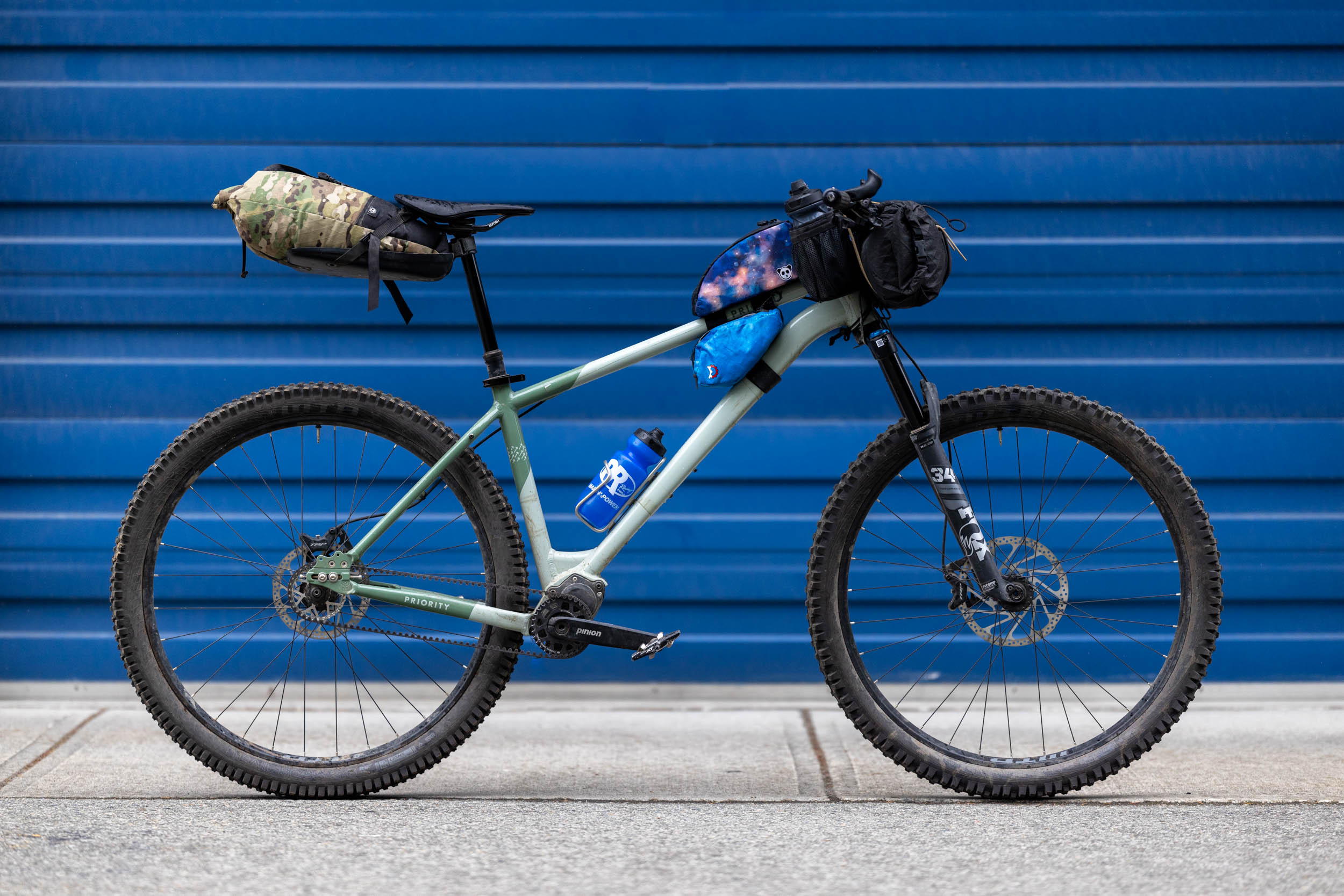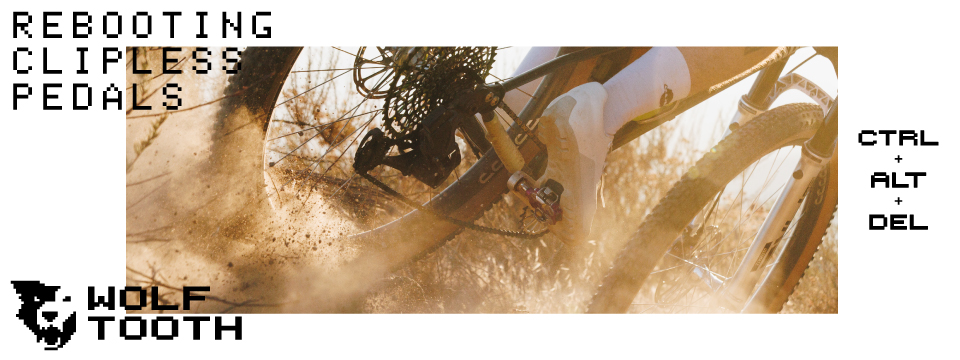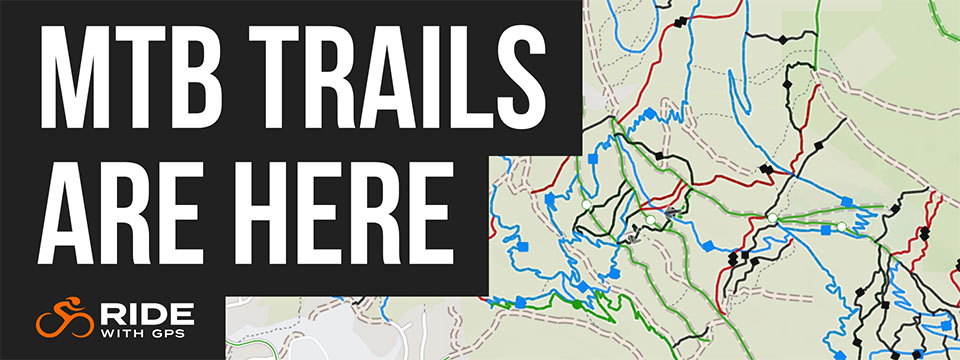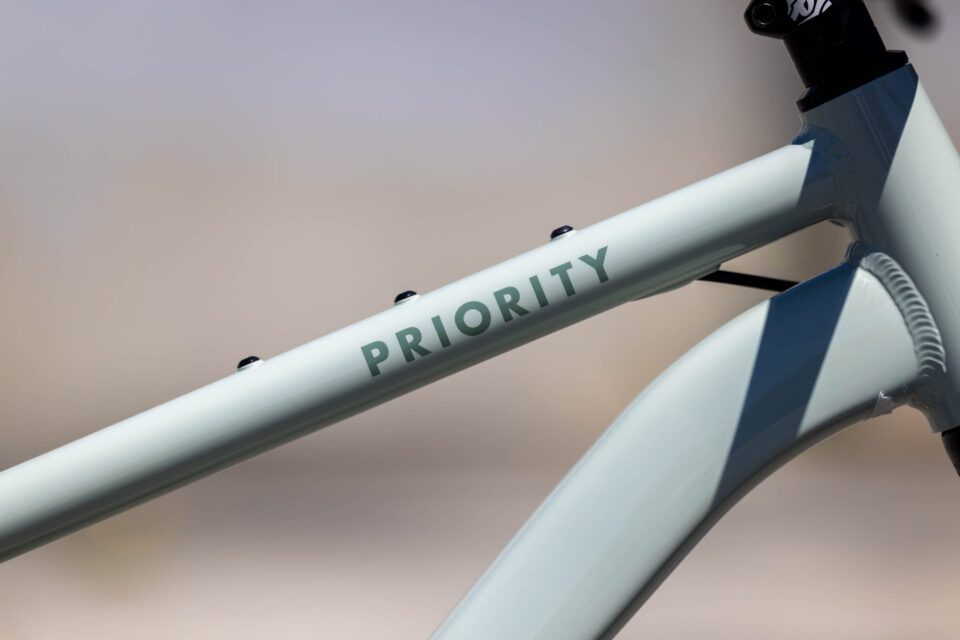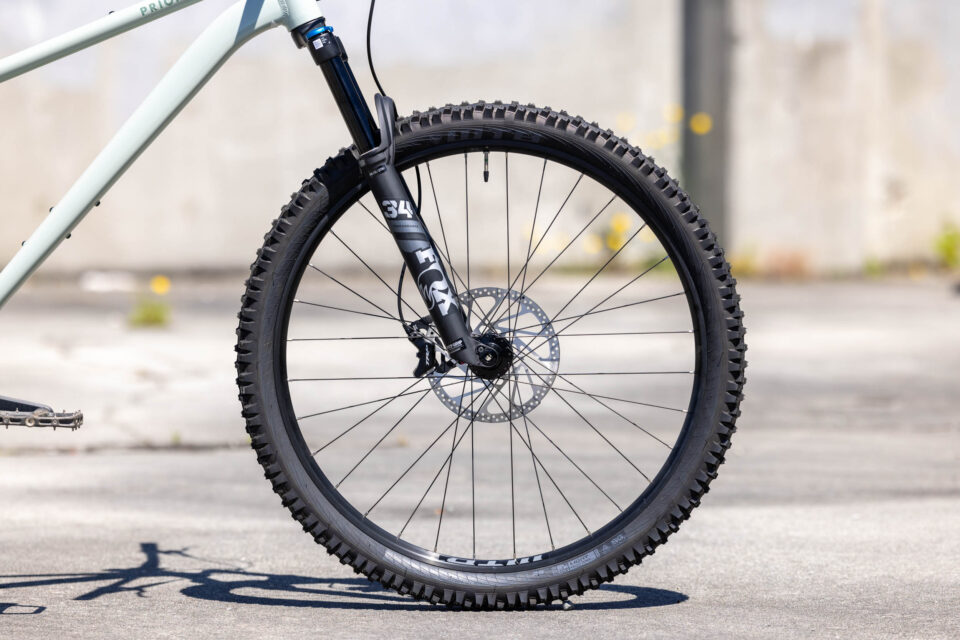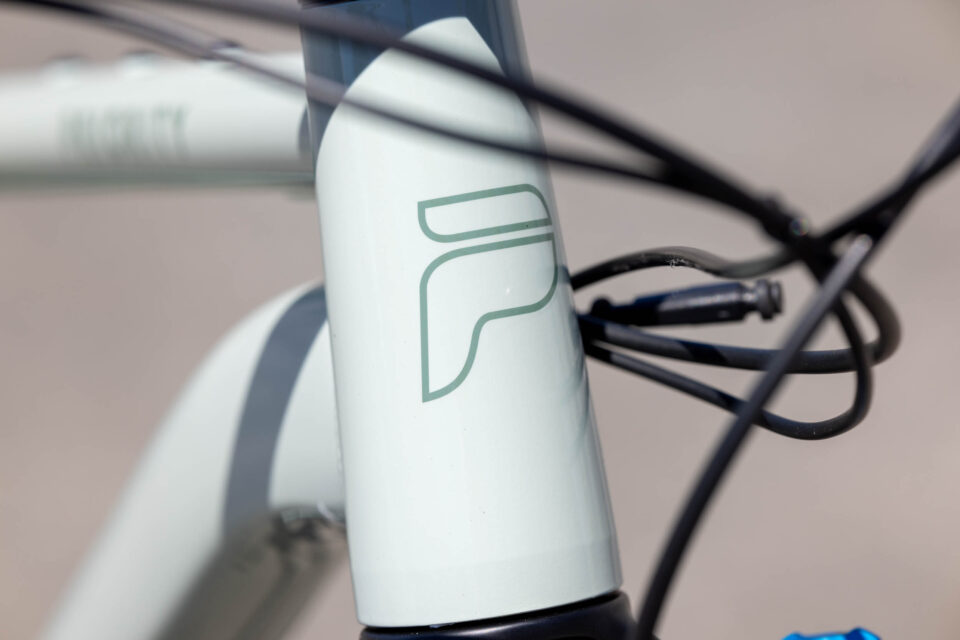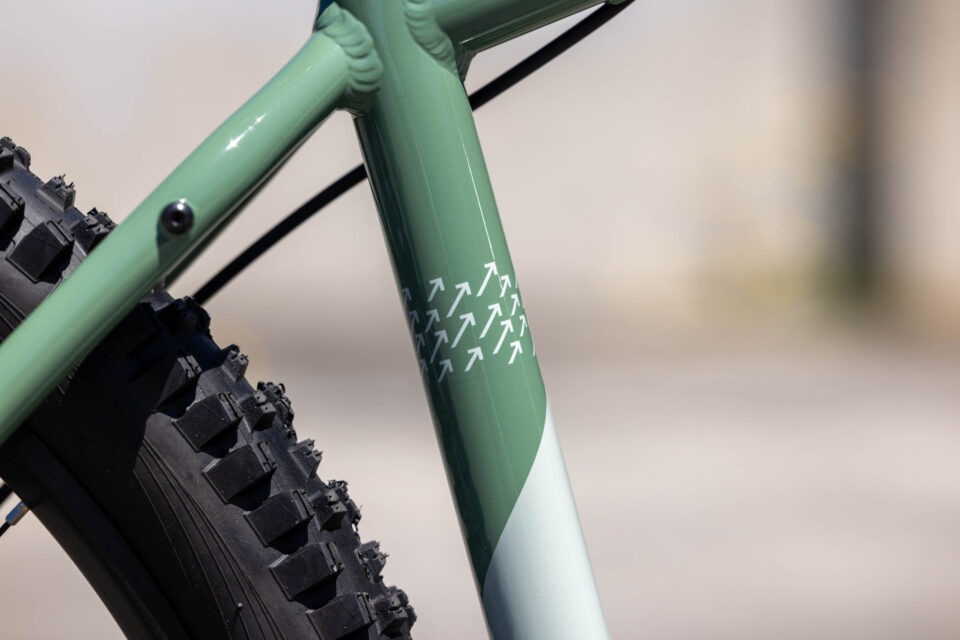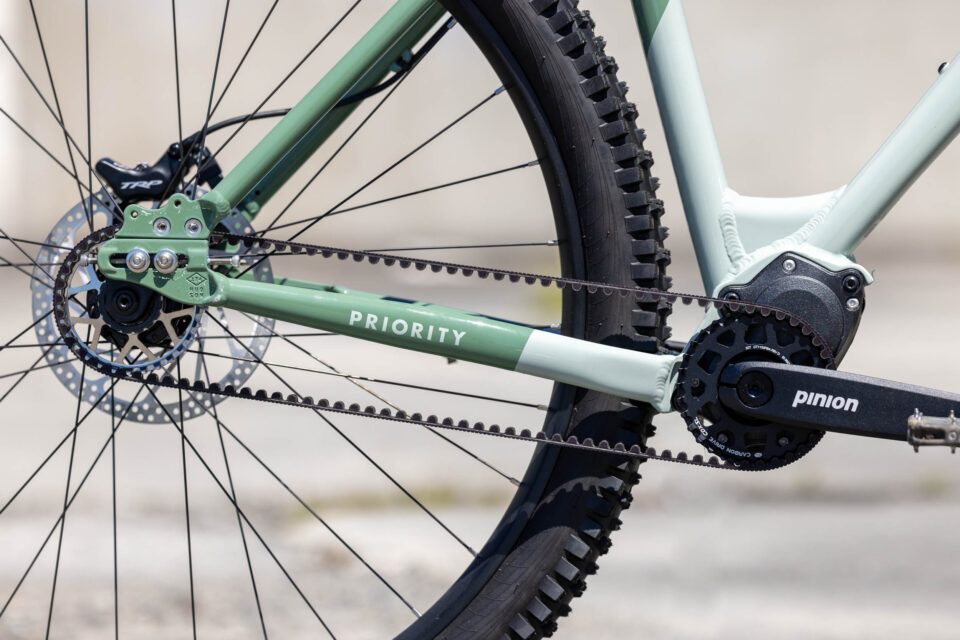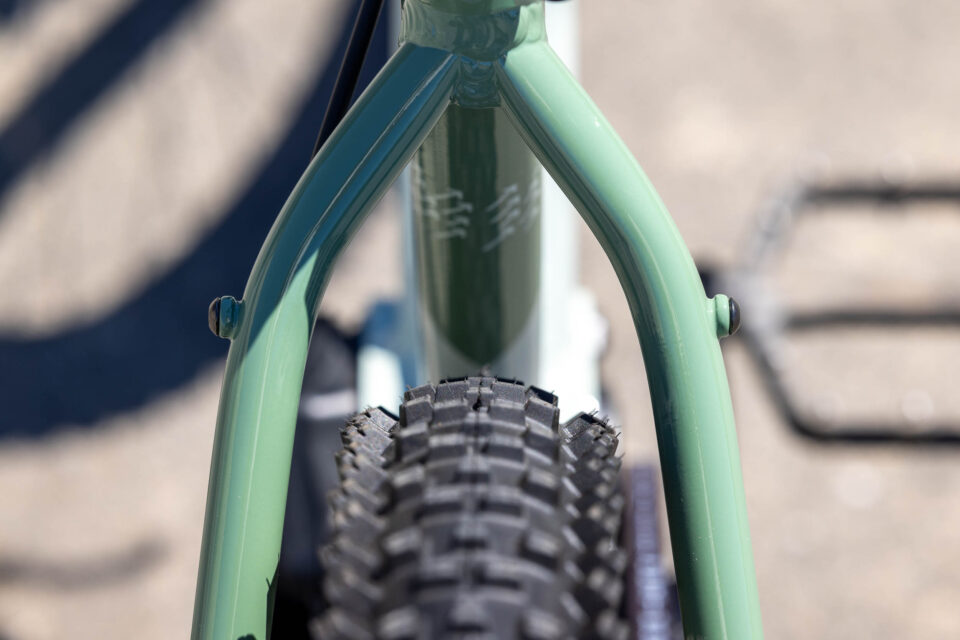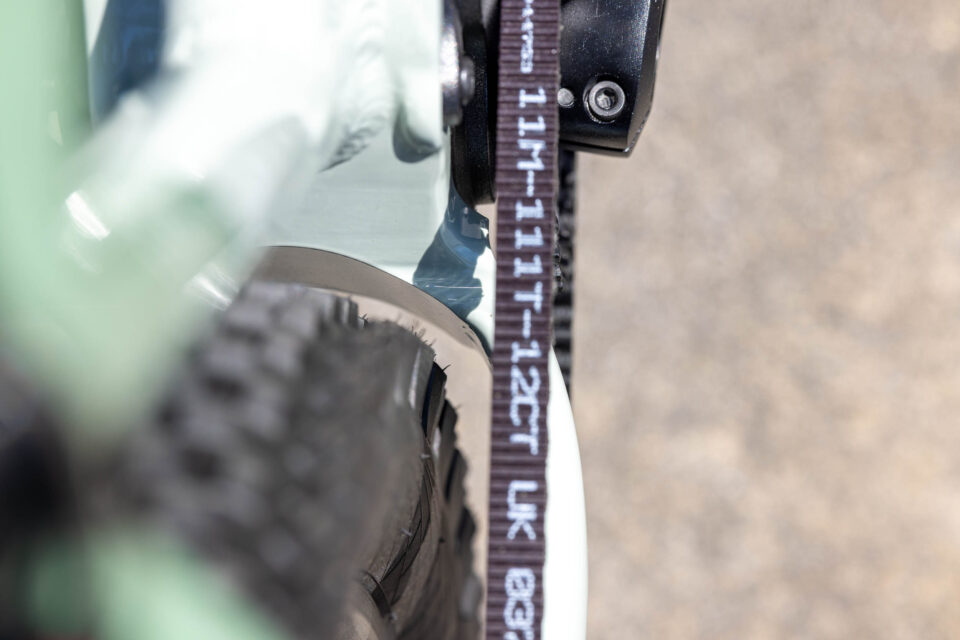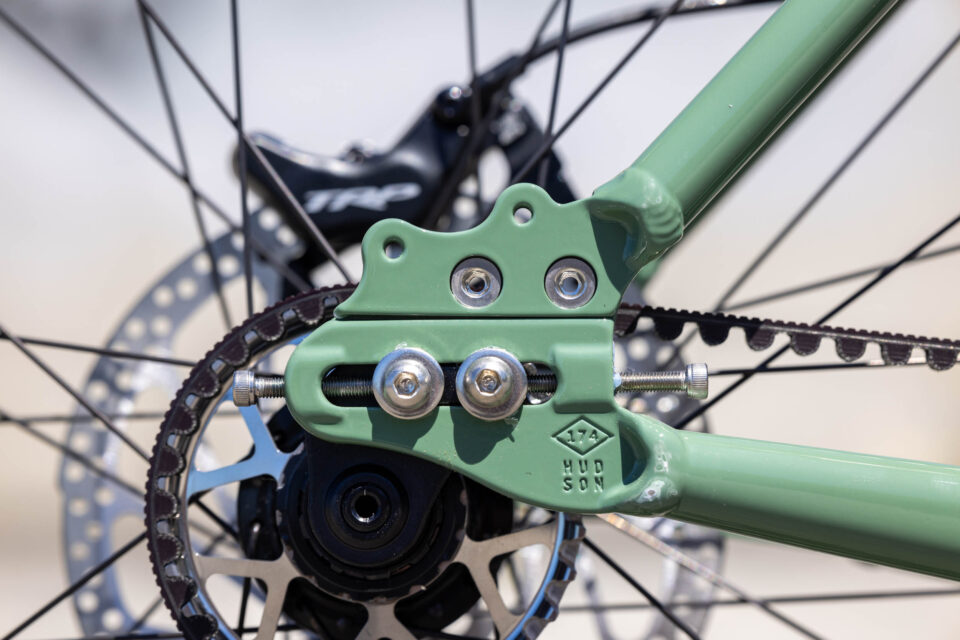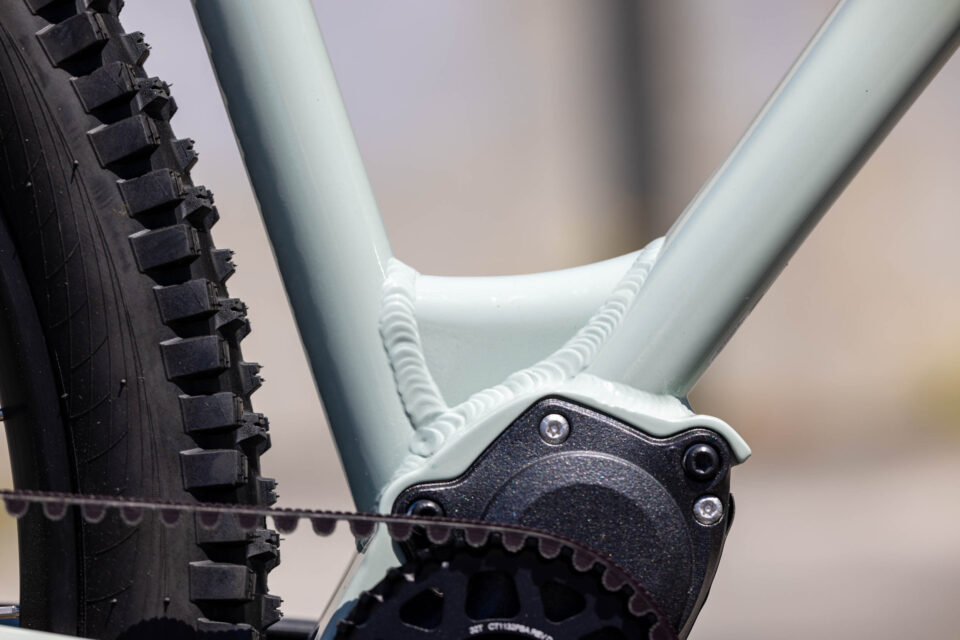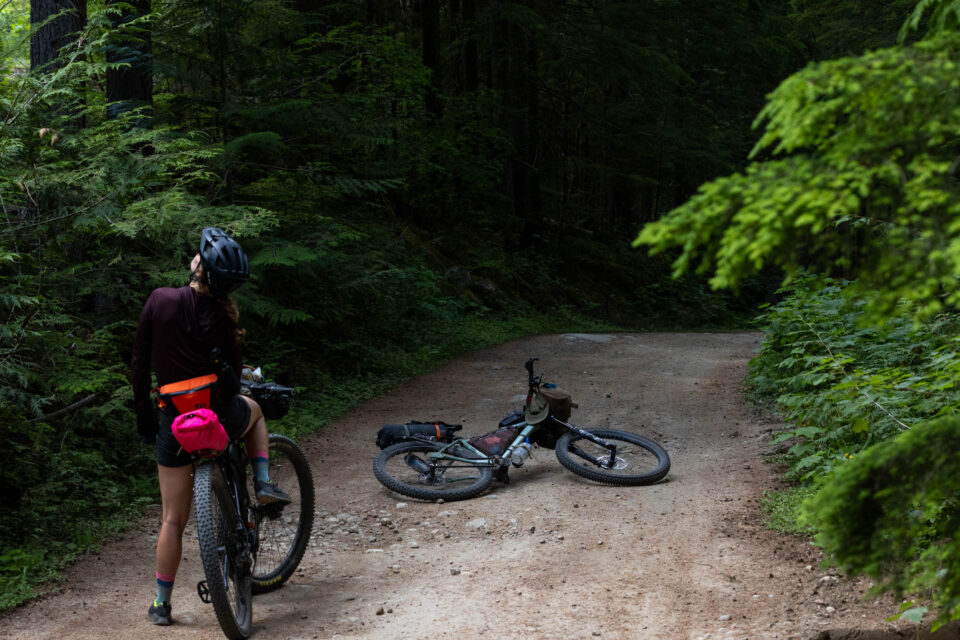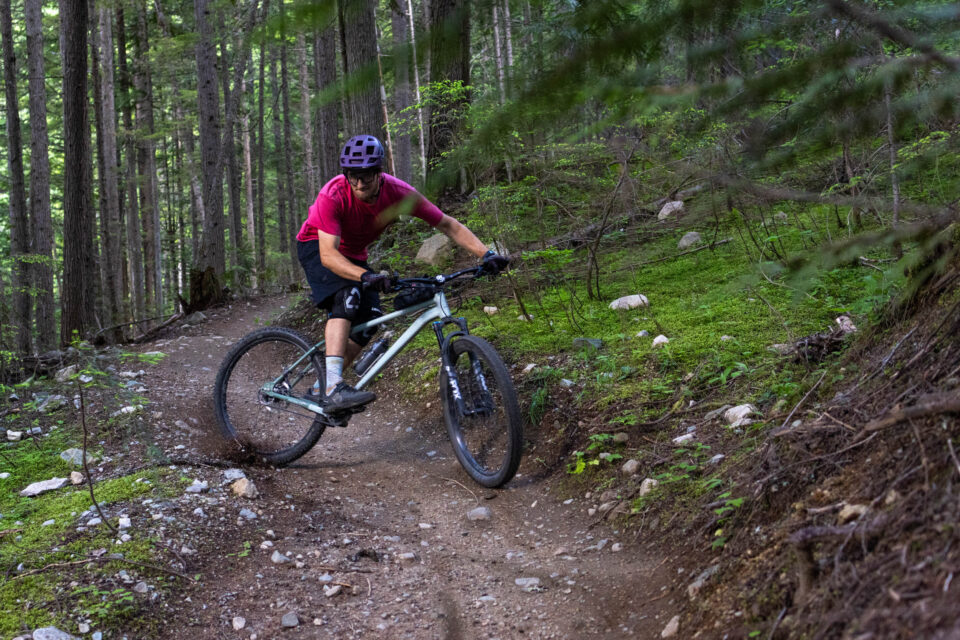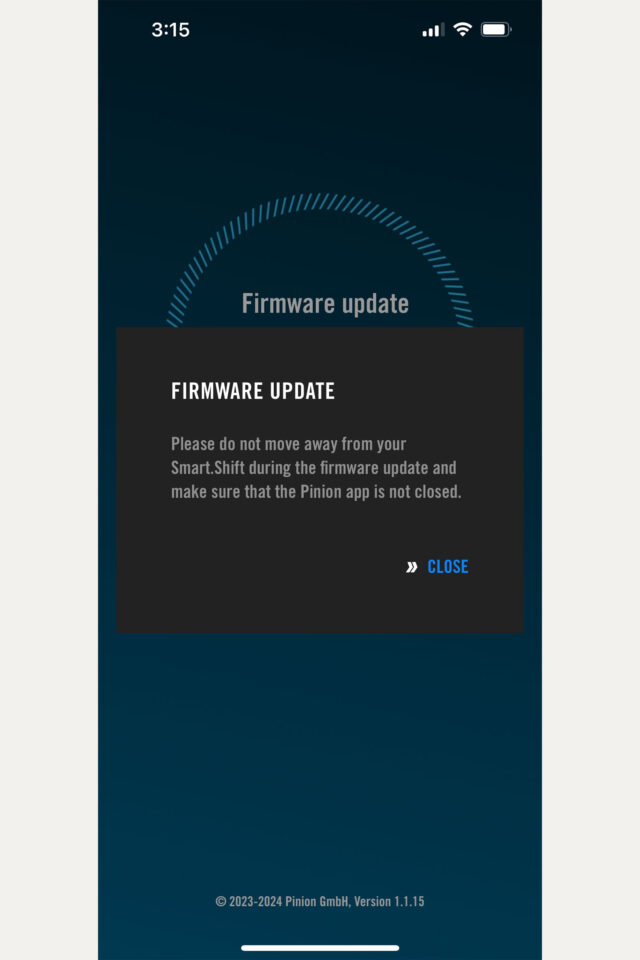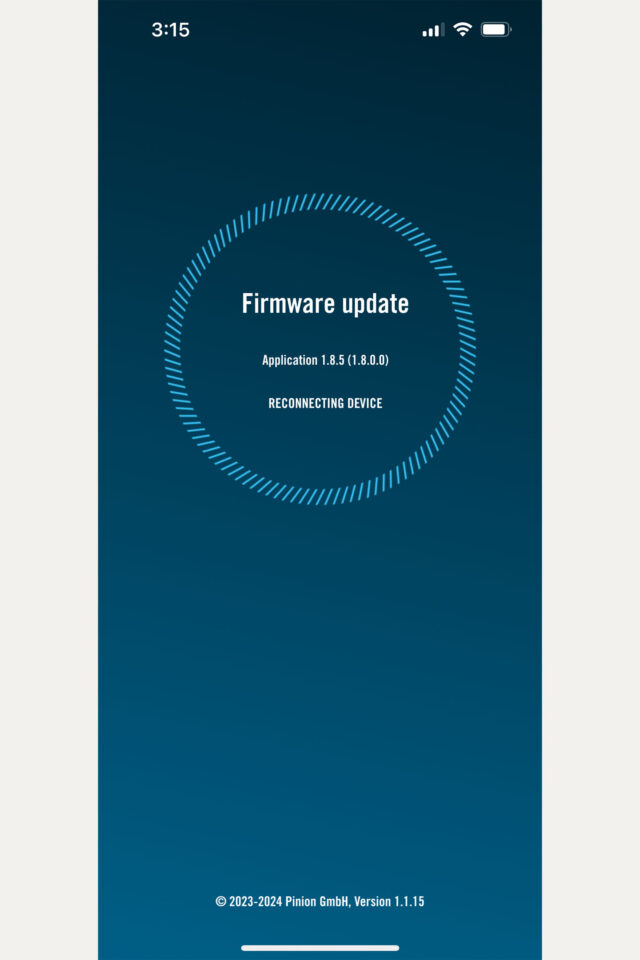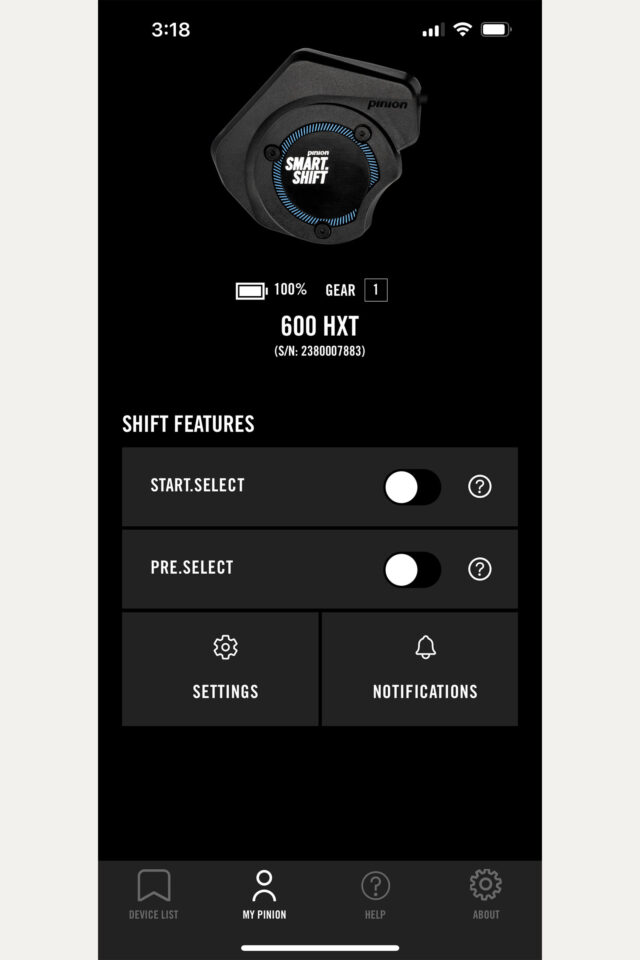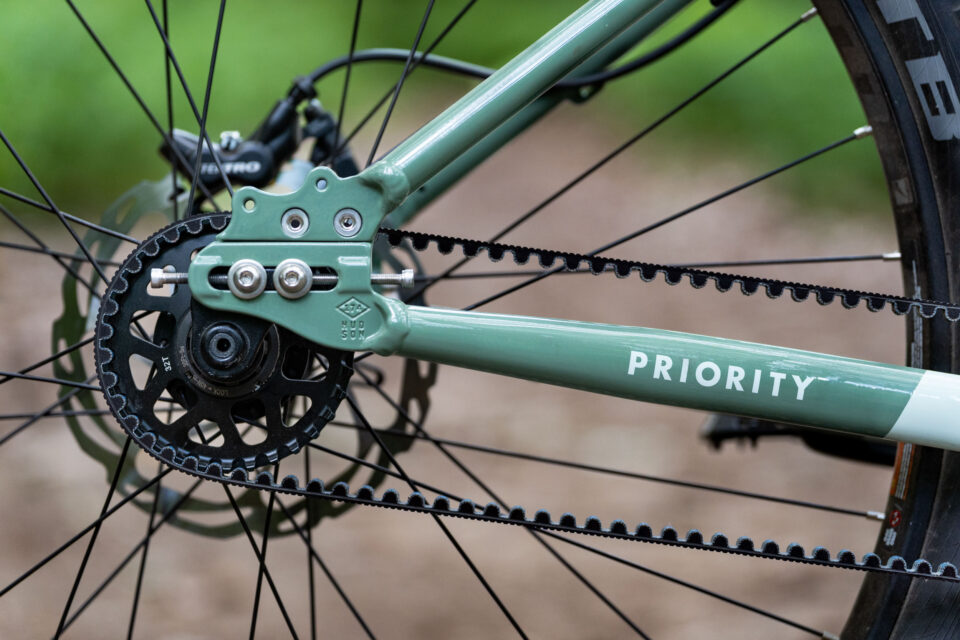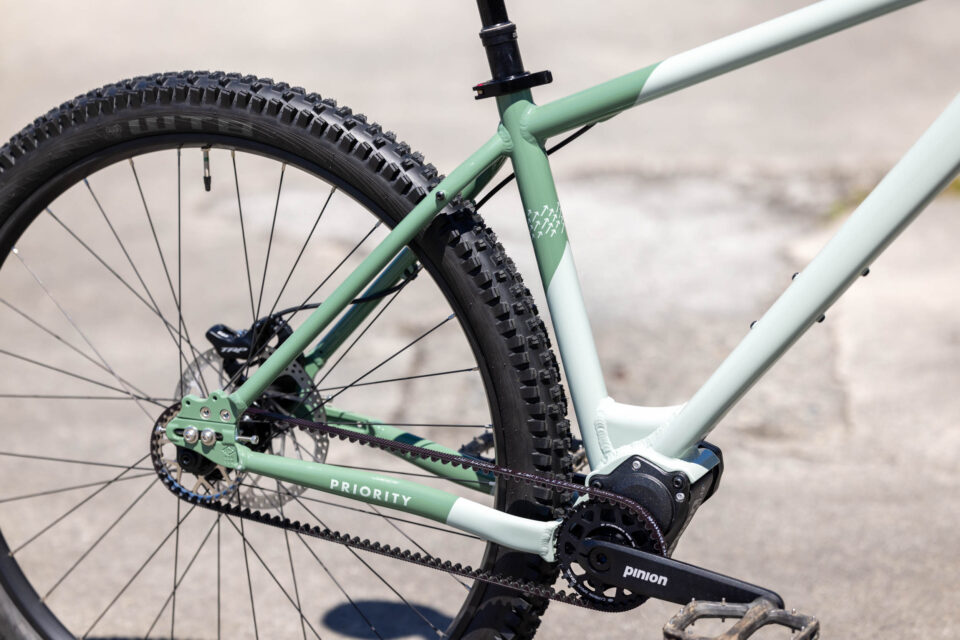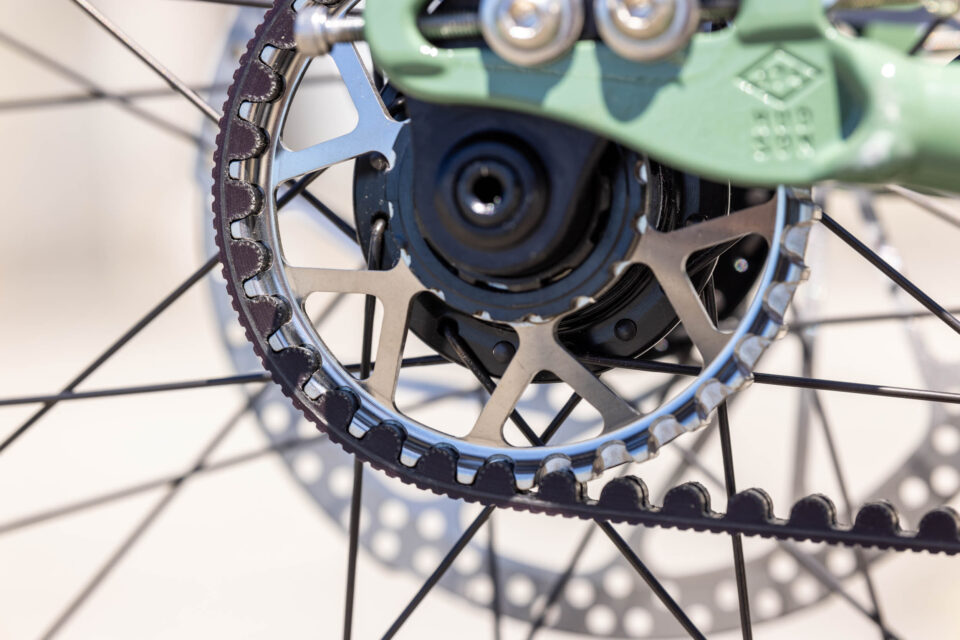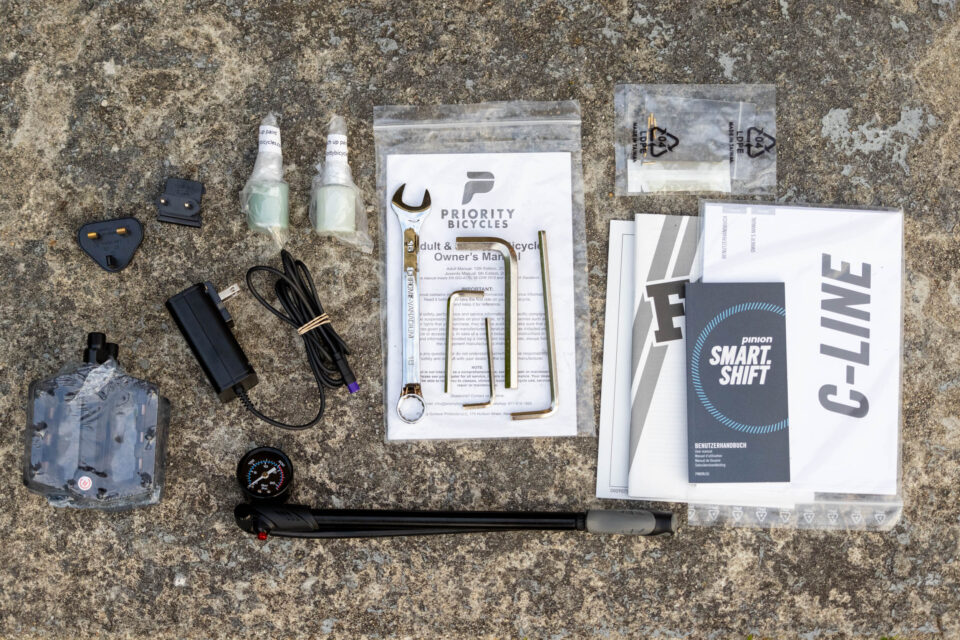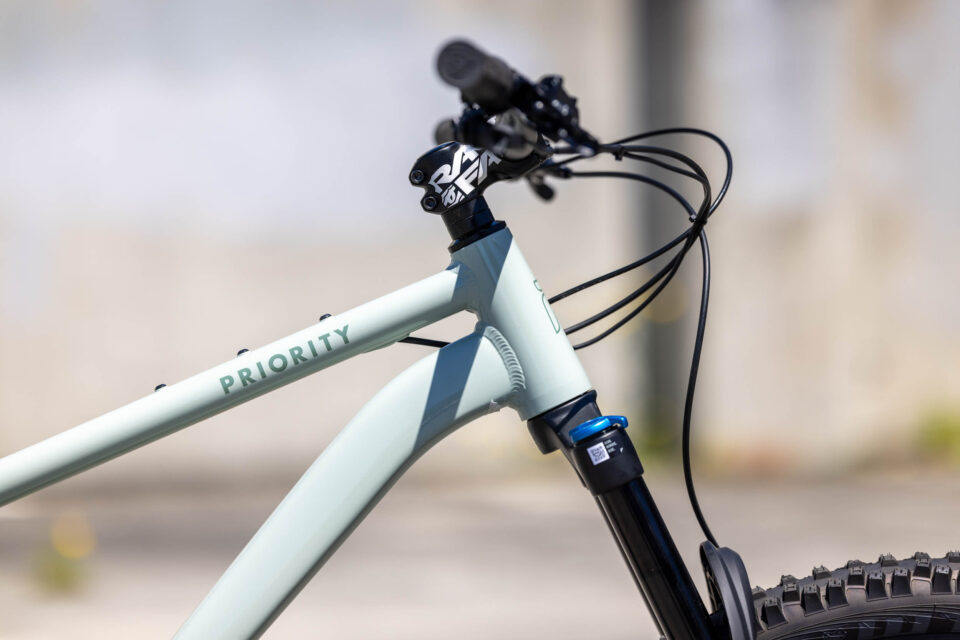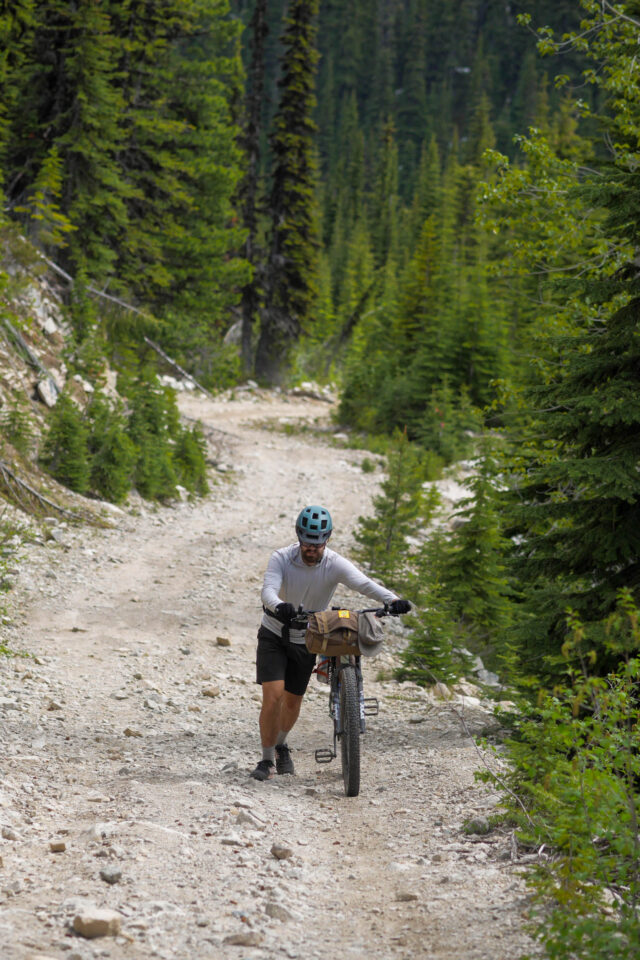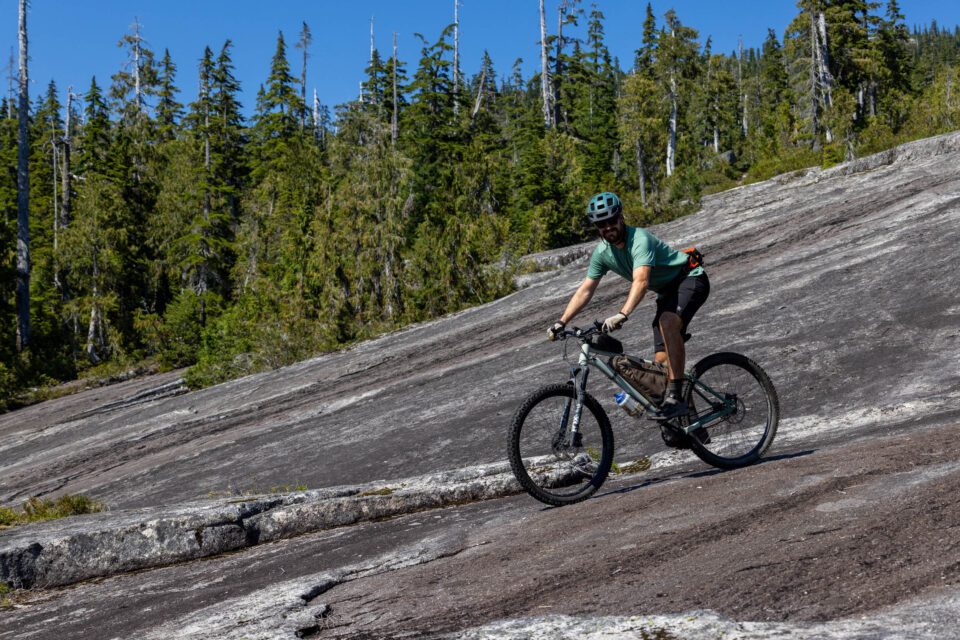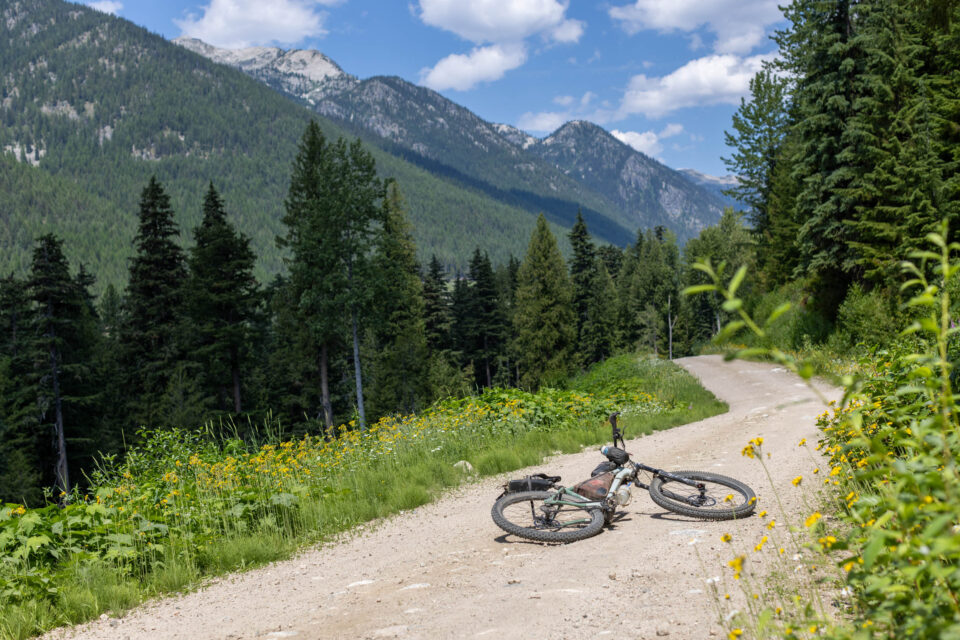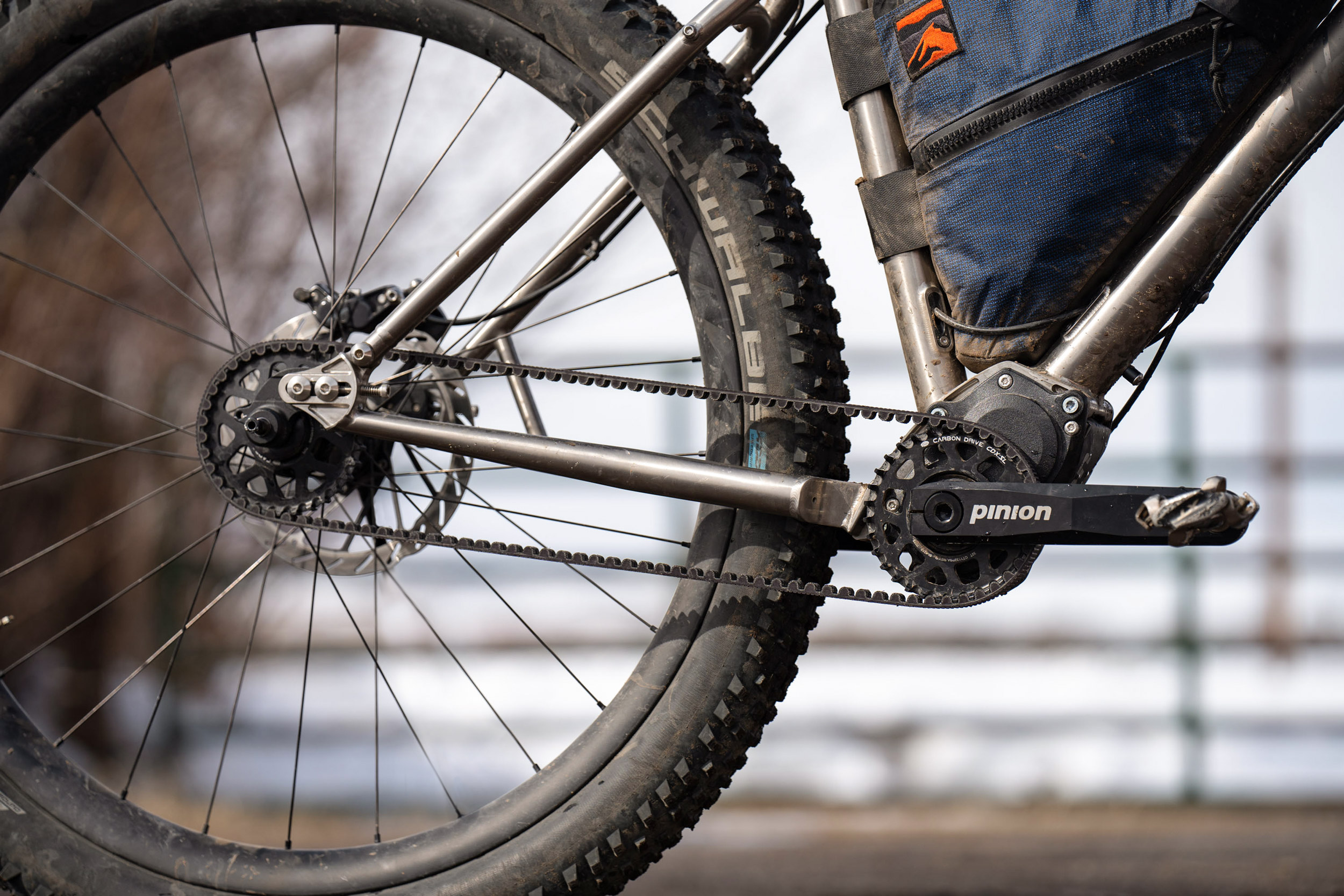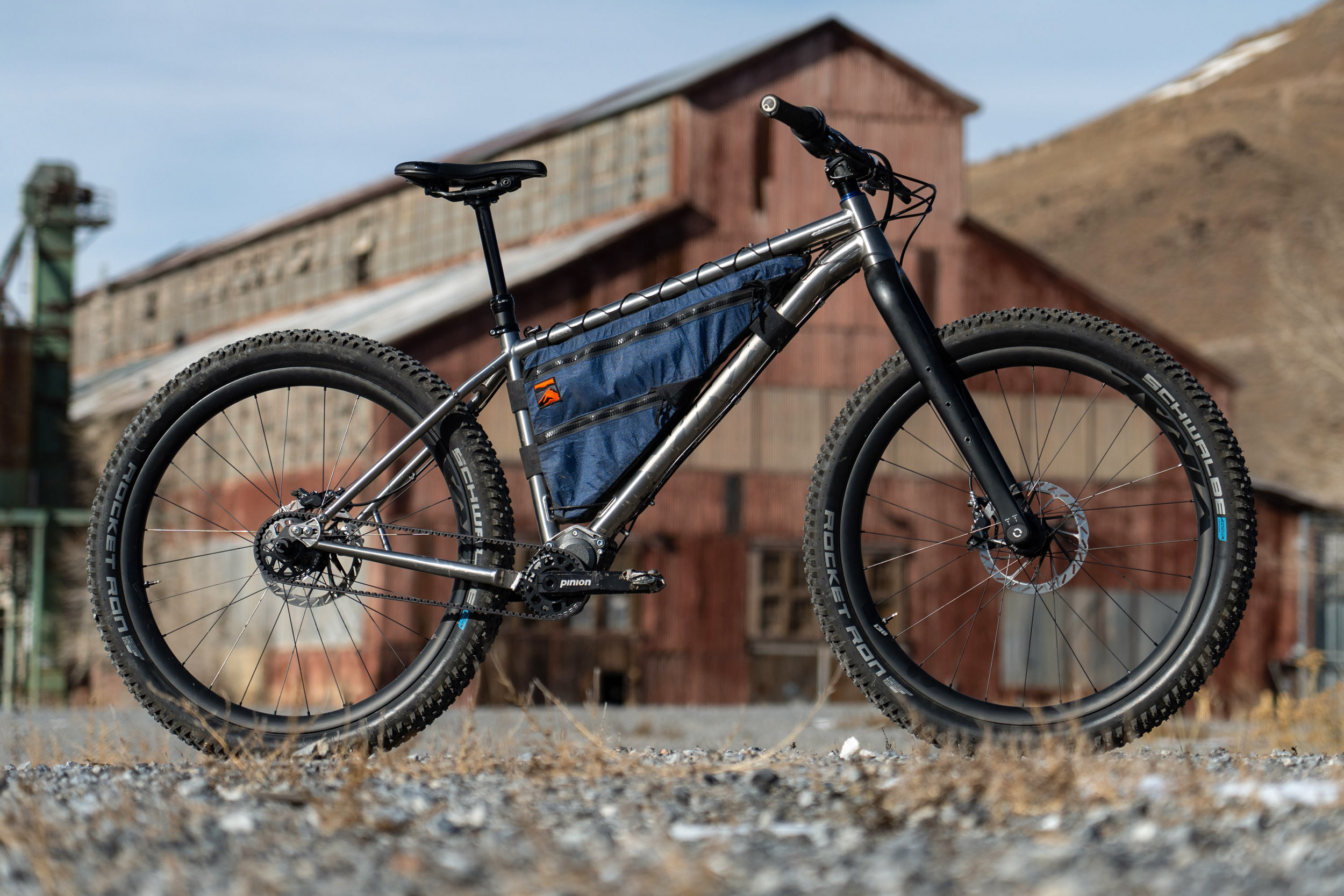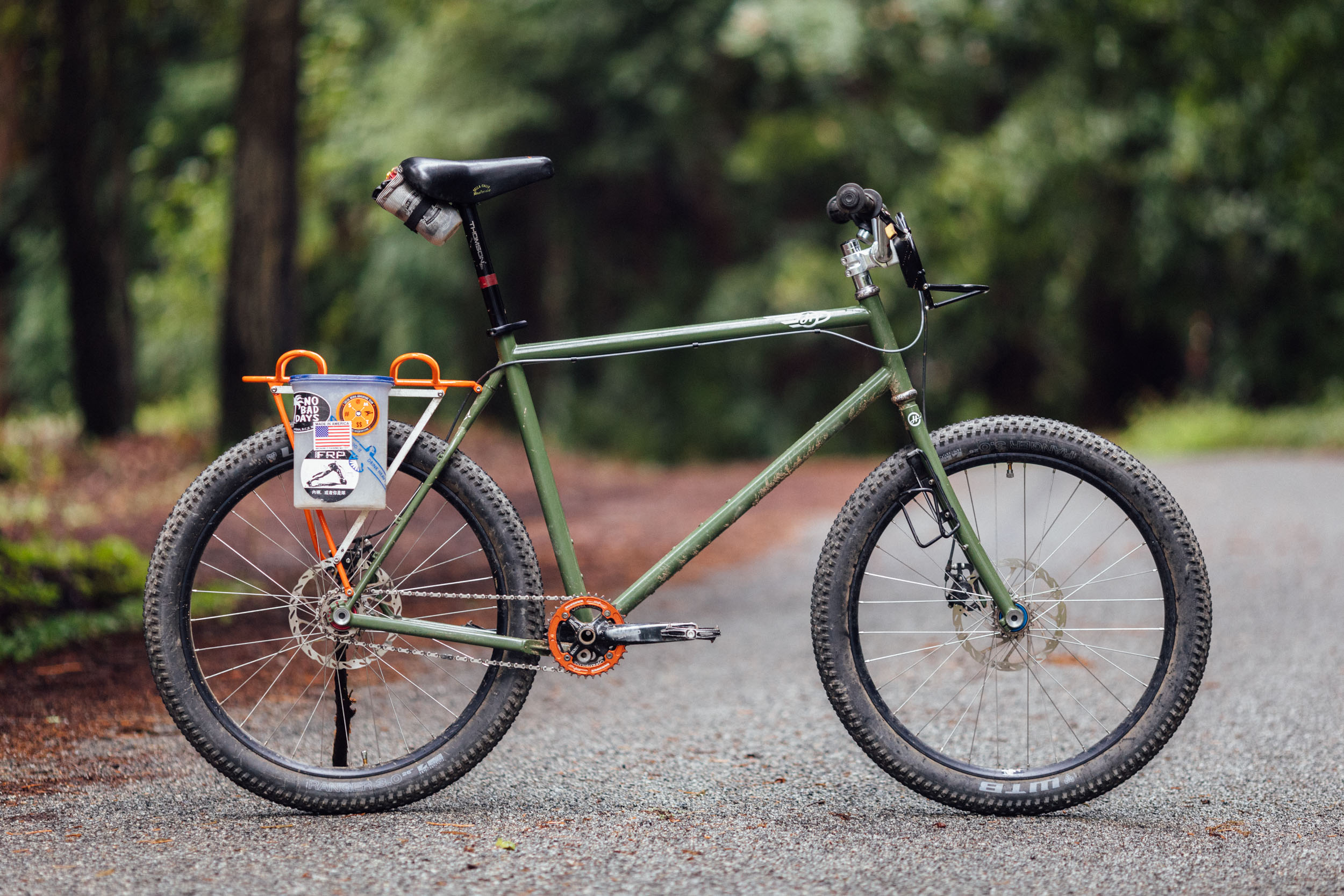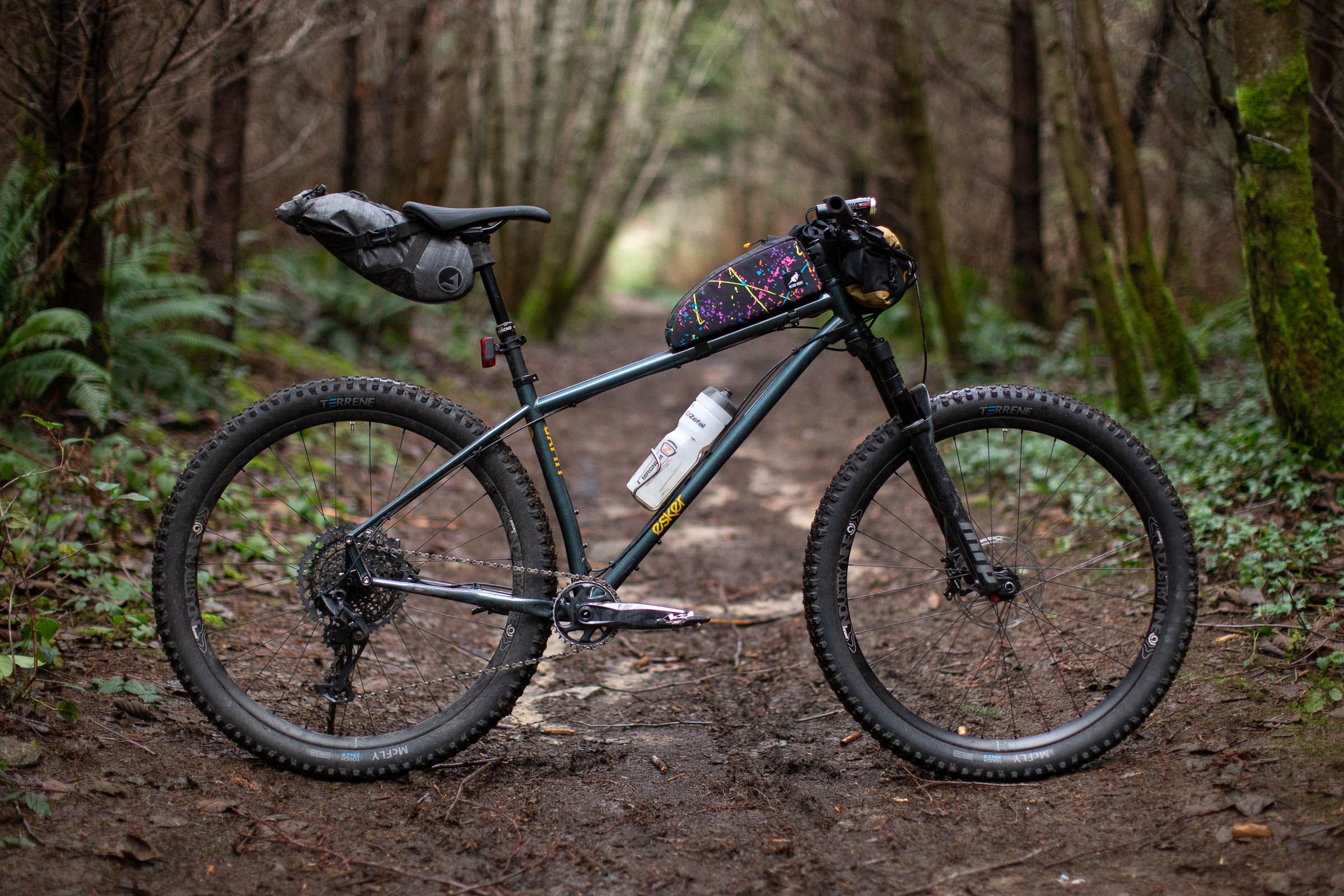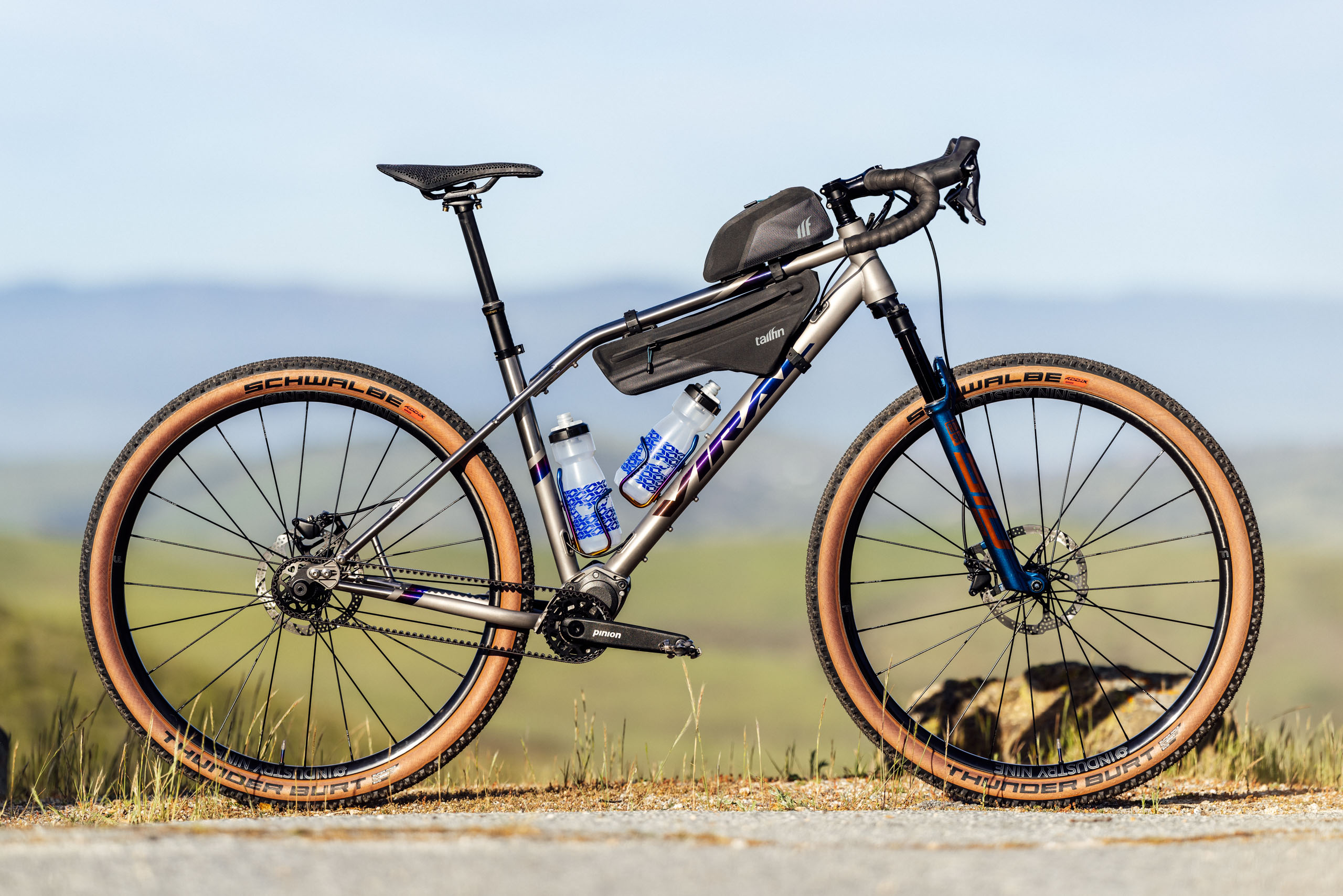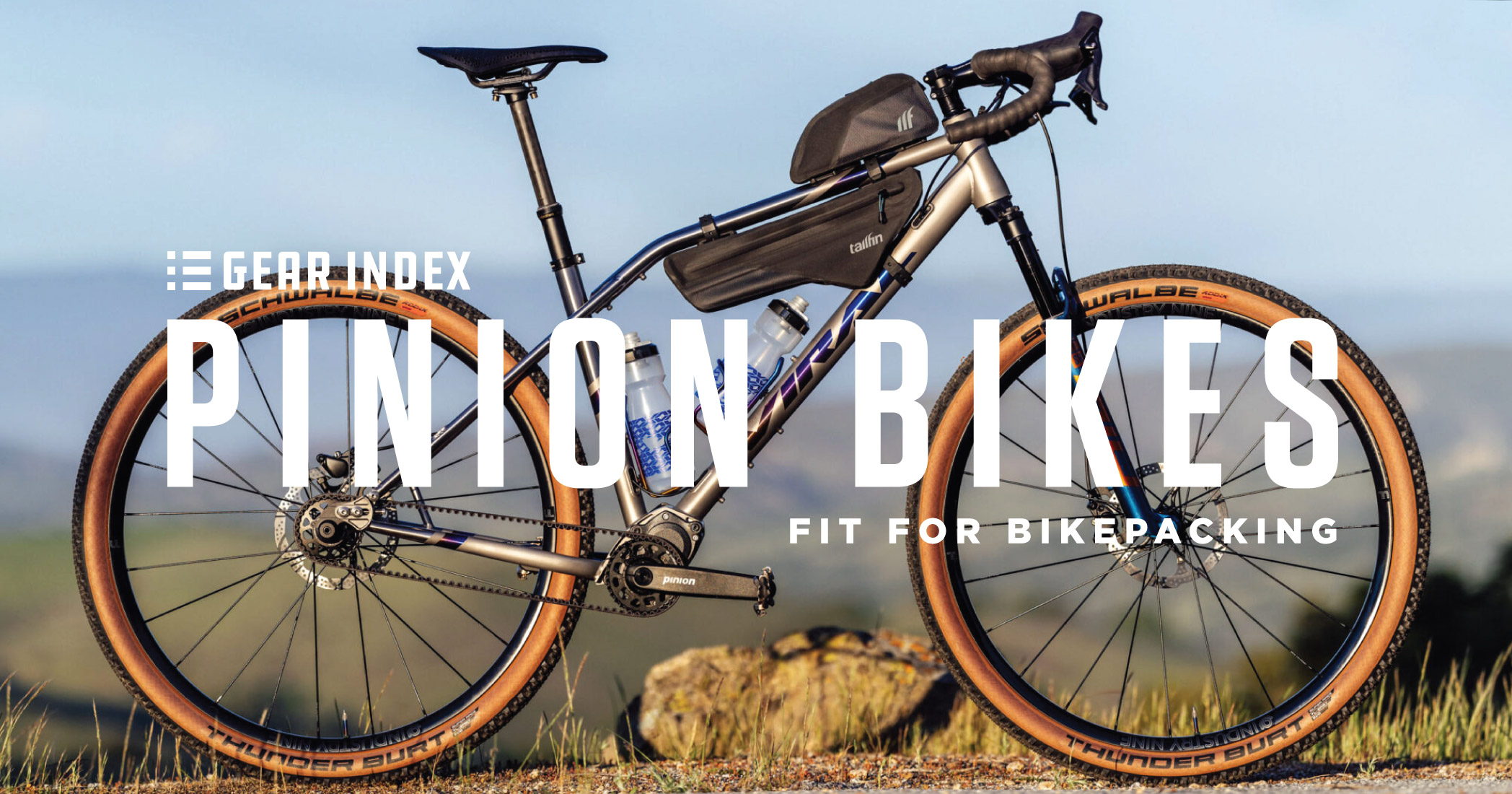Priority 600HXT Review: Shifting Opinions
The Priority 600HXT was the first Pinion-equipped production hardtail mountain bike in the United States to feature Pinion’s Smart.Shift electronic shifting and a Gates Carbon Belt Drive. Curious about how its modern geo and mostly maintenance-free gearbox would translate to multi-day bikepacking, Miles set his sights on British Columbia’s interior, where he tackled several route scouting trips and day rides. Find his Priority 600HXT review after thousands of miles of bikepacking and trail riding here…
PUBLISHED Aug 21, 2024
Additional riding photos by Tom Powell and Skyler Des Roches
I’m willing to bet if I were to get 100 bikepackers together in a room and ask who among them is Pinion-curious but hasn’t had the chance to ride a Pinion bike, a whole lot of hands would shoot up. Despite being around for over a decade, the Pinion gearbox system doesn’t have a fraction of the market penetration as derailleur-based drivetrains. So, while the durability and lack of maintenance of Pinion gearboxes are attractive, in reality, there aren’t that many production bikes designed around the system. Plus, Pinions are frame-specific, meaning the frame must be designed specifically to accommodate the gearbox; there’s simply no way to integrate a Pinion into a non-Pinion frame. In short, finding a Pinion bike with the specs and features you want will be more challenging than finding a derailleur-equipped alternative. I’d even go out on a limb and say there’s only a short list of Pinion bikes that I’ve been remotely interested in and even fewer that I’ve considered reviewing here on the site. One of those is the Priority 600HXT.
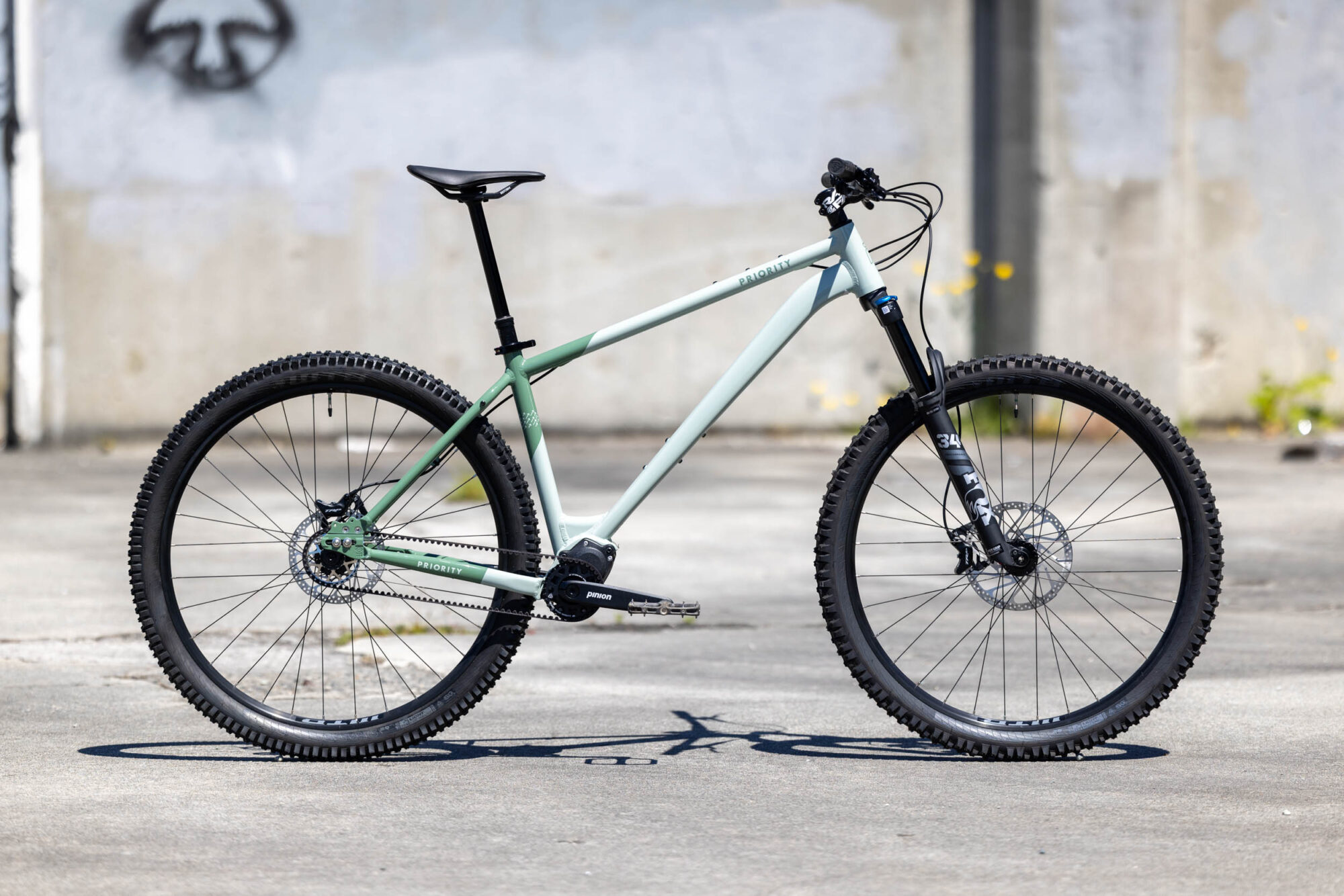
One aspect of the Pinion system that has likely held riders back is the Pinion grip shifter, which up until recently, was the only option, and it felt like a huge step back compared to the modern trigger shifters found on most bikes today. That all changed in 2022 when Pinion Smart.Shift was released, promising nearly instantaneous shifts while under load and stationary. Push-button electronic shifting combined with a robust, mostly maintenance-free gearbox sounds alright to me. Now, the only question was who would be first to integrate Smart.Shift into a bike interesting enough to try out.
Behind the Priority Bicycles 600HXT
If there’s a brand that lives and breathes belt drives and internal gear hubs, it’s Priority Bicycles. While Priority isn’t regularly mentioned on the site, it’s no surprise that they were the first US-based bicycle brand to integrate Pinion Smart.Shift into a production mountain bike. The brand launched via Kickstarter in 2014 with its first low-maintenance, belt-drive cruiser, the Priority Classic. It was the first of three fully funded campaigns and set the tone for all models in their lineup. They have offices in New York and California, sell directly to customers worldwide, and set themselves apart from the competition by offering some of the most competitive pricing in the game. In fact, Priority is responsible for some of the lowest-priced Pinion bikes available, with complete builds starting at just $2,500 USD.
A lot has changed since Priority’s early days of beach cruisers and commuter bikes. In 2020, Priority launched the 600x Adventure in collaboration with YouTuber Ryan Van Duzer. It was marketed as a bike for the Great Divide Mountain Bike Route, and that’s exactly where Ryan tested a prototype. Three years later, the Priority 600HXT was announced and was the third model leveraging the Pinion gearbox platform. It was, and still is, the rowdiest hardtail mountain bike in their lineup, and it was the first production hardtail in the US to use Pinion Smart.Shift electronic shifting—a big step forward from the grip shifters. This year, Priority released the 600ADX. It’s an updated version of the original 600x Adventure but more of a cross-country bike compared to the modern trail bike geometry of the 600HXT.
The 600HXT was the first model from Priority Bicycles that seemed like something I’d enjoy riding. As someone who would label themselves Pinion-curious but hardtail-proficient—with a soft spot for more progressive hardtails—the 600HXT looked like the perfect introduction. I appreciated its competitive price tag, seemingly well-curated build kit, and trail-friendly angles. While it might fall into a category of bikes that some folks will say is “too long” or “too slack” to bikepack on, we’ve proven time and time again that bikes in this category can be incredibly versatile, even for back-to-back days of pedaling.
A Closer Look at the Priority 600HXT
From the beginning, Priority has primarily worked with aluminum. Like all Pinion bikes, the 600HXT’s 6061 aluminum frame is designed specifically for a Pinion gearbox where the bottom bracket traditionally lives. At the rear end, there are sliding dropouts to dial in the belt or chain tension, the seat stay splits apart from the top of the sliding dropouts for belt setups, there are rear rack mounts, and internal dropper post routing pops outside of the frame just above the gearbox.

Moving forward, all frame sizes have triple-pack mounts inside the main triangle, an additional standard bottle mount under the downtube, and triple-pack mounts on the top tube for bolt-on top tube bags. There are cable ports on both sides of the top tube, and the non-drive-side port is home to the rear brake housing and the charging cable for the Smart.Shift unit. The 600HXT has boost hub spacing (15 x 110MM/12 x 148mm) front and back, clearance for 29 x 2.6” tires, and is only available as a complete build for $3,999 USD.
The 600HXT comes in four sizes, all based around a slack 65° head tube angle, long reach, and somewhat long chainstays at 439mm in the stock position. Each size comes equipped with a dropper post, chunky 29 x 2.6/2.5″ tires, a 140mm travel Fox 34 Performance fork, and hydraulic disc brakes. Priority specs the 600HXT with a Gates Carbon Belt, which is made from Polyurethane with carbon tensile cords woven throughout for added strength. The included front and rear sprocket are belt-specific, with a raised track in the middle that mates with the belt called the CenterTrack fin. Gates claims the track assists with belt retention and helps shed mud and debris. Like any Pinion-equipped bike, you can swap out the sprockets and belt for Pinion’s standard chain sprockets and a chain, but that would have to be modified after purchasing the bike.
At first glance, the 600HXT appears to be a modern hardtail mountain bike with relatively progressive geometry and a well-rounded, mid-tier build kit. As someone who finds modern hardtail geometry perfect for most of my bikepacking needs, I wasn’t as concerned about geometry and the components but more interested in how the Pinion transmission would affect my experience on the bike. More specifically, I was curious about how the extra weight and the mechanical efficiency would compare to a traditional chain-driven system on day rides and multi-day bikepacking trips.
As luck would have it, I spent a good chunk of this summer in the Kootenays of British Columbia scouting several new bikepacking routes for the site, and the Priority 600HXT came along for the ride. The trip included around 1,000 kilometers (621 miles) of loaded bikepacking spread across three routes (the longest being over 600 kilometers) with everything from smooth gravel roads to singletrack and everything in between.
Geometry and First Impressions
Like other progressive hardtail mountain bikes we’ve tested, the Priority 600HXT is long and low. A closer look at its angles shows that it’s not as long or progressive as some of the rowdier hardtails we’ve shared here on the site. Bikes including the Chromag Surface Voyager, Knolly Tyaughton, Pipedream Sirius S6, Transition TransAm, Pipedream Moxie, and Cotic Solaris are all a little longer and have slightly more extreme angles.
One of the most comparable bikes I came across was the Esker Japhy, which I reviewed a few years back. The 600HXT’s 65° head tube angle is a degree slacker and they both have relatively steep seat tube angles that are just 0.5° apart. Their reach numbers are nearly identical, too, and the Japhy has a slightly higher stack height. The 600HXT’s wheelbase has about 30mm on the Japhy, mostly due to its longer chainstays and the stock dropout/belt position. However, after adjusting the 600HXT’s geometry for sag, the head tube angle is 66.5° (1.5° steeper), and the seat tube angle sees the same change, closer to 77°. Calculating for sag also shows a lower bottom bracket—over 10mm lower—making it one of the lowest hardtails I’ve ridden.
| Size | S | M | L | XL |
|---|---|---|---|---|
| SEAT TUBE C-T | 360 | 410 | 440 | 460 |
| BB DROP | 60 | 60 | 60 | 60 |
| CHAINSTAY | 439 | 439 | 439 | 439 |
| TOP TUBE EFFECTIVE | 595 | 607 | 640 | 650 |
| STACK | 578 | 598 | 608 | 644 |
| REACH | 436 | 445 | 470 | 488 |
| Standover | 724 | 750 | 787 | 812 |
| HEAD ANGLE (sagged) | 65° (67.5°) | 65° (67.5°) | 65° (67.5°) | 65° (67.5°) |
| HEAD TUBE LENGTH | 80mm | 100mm | 120mm | 130mm |
| SEAT TUBE ANGLE (sagged) | 75.5° (77°) | 75.5° (77°) | 75.5° (77°) | 75.5° (77°) |
| WHEELBASE | 1172 | 1186 | 1223 | 1233 |
| RIDER HEIGHT GUIDE cm | 5’5″-5’8″ | 5’7″-5’11” | 5’10”-6’1″ | 6’1″-6’4″ |
Despite a few differences and the 600HXT being made from aluminum, the 600HXT and Japhy have much in common. The steel Japhy I reviewed hit a geometry sweet spot that I found perfect for big backcountry rides, singletrack, rough doubletrack, and steep, technical descents without feeling like overkill while linking trails together with gravel roads. Seeing the similarities between the two bikes was promising, but I was interested in how an aluminum frame and Pinion transmission differed from the Japhy’s 4130 Chromoly steel frame and traditional drivetrain.
Sitting on the bikes side by side, I’d say they result in a very similar riding position and something that feels equally suitable for day rides and loaded bikepacking. Like the Japhy, the 600HXT’s relatively low bottom bracket keeps the bike feeling planted and surefooted. As someone who has transitioned to riding XL frames and some flavor of riser bar, a combination that feels great on long rides and big descents, I only wished the 130mm head tube on the XL 600HXT was ~10mm longer. Overall, as far as geometry goes, it hits a sweet for bikepacking routes with lots of singletrack and rough terrain. After testing several titanium and steel hardtails over the last year, the 600HXT had a familiar feeling in a good way. The real question was what role the Pinion transmission plays in the ride quality and feel. Spoiler alert: it’s significant.
In Pinion Smart.Shift We Trust
We already know that Pinion-equipped bikes require frames designed specifically for the Pinion gearbox. In the real world, this results in significantly more frame material surrounding the gearbox/bottom bracket area and an overall more robust frame to support the extra weight of the system. Originally, I was so focused on the weight and performance of the system that I wasn’t entirely in tune with how the Pinion influenced the frame’s ride quality. Modern aluminum frames have come a long way, my glowing review of the Hudski Doggler is a good example, but the Priority 600HXT is an outlier.
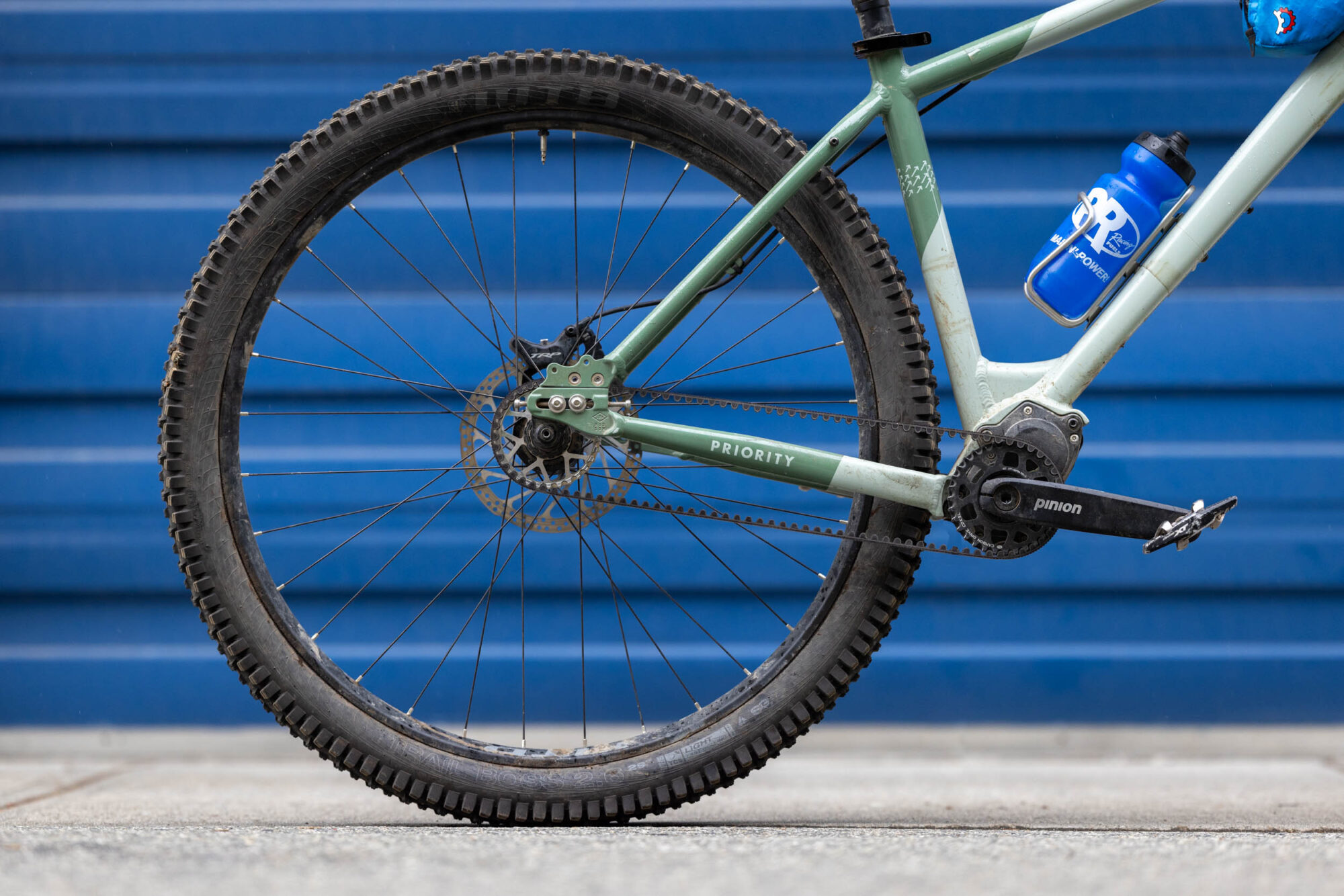
Extending out from the gearbox is a collection of extra-thick aluminum tubes, beefy joints, and oversized dropouts. Not to say this isn’t necessary for the design, but it has some impact on how the bike feels. In short, it’s stiff. The rear end is noticeably solid and does a good job of supporting the extra weight of the gearbox while also dishing up loads of traction and stability in tight, fast corners. Paired with a short seat tube and a long dropper post, I had no problems leaning into corners and accelerating on the other side. Despite its weight, each pedal stroke translated to forward momentum. Albeit, that’s coming from a roughly 200-pound, 6’1” tall rider with relatively good fitness. I’m not confident small or less aggressive riders would have the same experience.
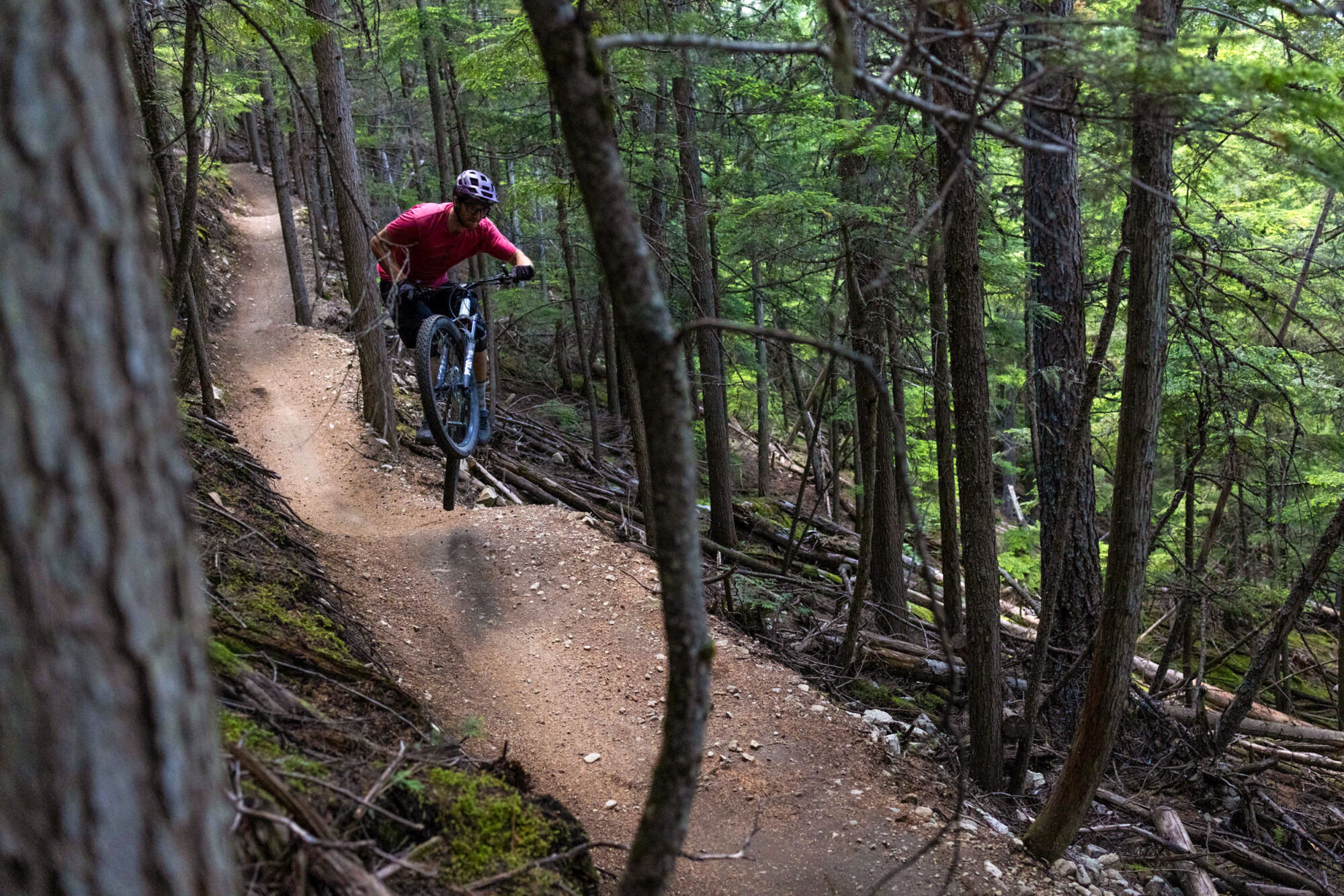
To test its capabilities further, I handed the bike off to my friend Harry Tudor while working in Nelson, British Columbia, this summer. Harry rarely has two wheels on the ground and finds ways to pop, manual, and jump off anything in sight. If there’s someone who makes me wish I was riding bikes instead of playing baseball as a kid, it’s Harry. He echoed much of what I shared regarding the stiffness and the frame’s feedback, and he had the 600HXT airborne in no time. He said the system’s weight made the bike slightly more difficult to move horizontally in the air, but he had no problem using the weight to his advantage on the ground, carving into corners and whipping out stylish “Scandi flicks” with ease.
As expected, the Pinion Smart.Shift transmission took some getting used to. The beauty of electronic shifting is that you get the ergonomics of light-action paddle-style shifters (a huge advantage over grip shifter Pinion setups), you can shift through gears without pedaling, and it’s possible to shift under load. In my experience, the first two are entirely true, but the third should come with an asterisk. Shifting the Pinion Smart.Shift transmission under load, particularly while climbing steep grades, is a hit or miss at best. According to Pinion, there is an input torque limit of 250Nm, and when surpassed, the system may fail to shift. The average rider can easily put out between 200-300Nm, so it’s not surprising that I can reach the max input torque relatively quickly. It’s worth noting that the standard, non Smart.Shift Pinion transmissions cannot shift under load—so Smart.Shift is still a huge improvement, especially when riding singletrack. There are a few other quirks, such as how the gearbox makes metallic sounds when shifting under load or clicking noises in the highest gear, but both are normal, according to Pinion. The promise of silent pedaling is a common story among Pinion diehards, and that didn’t quite align with my experience.
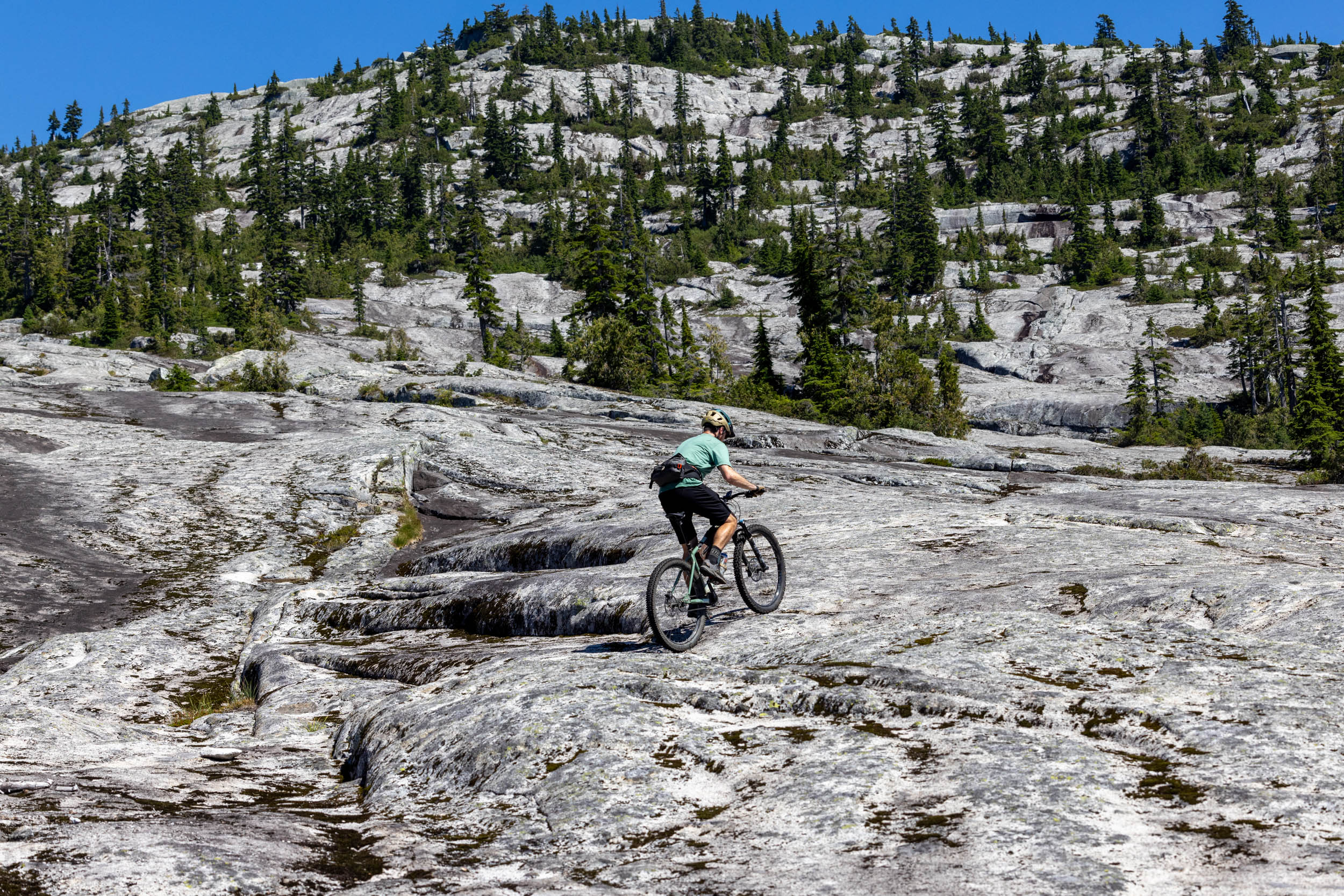
The lack of a rear derailleur is the real selling point, in my eyes. A rear derailleur sits in a very exposed position on the bike, and it’s not uncommon for it to take knocks and bumps from rocks and tight singletrack. Ditching the derailleur for a totally enclosed system allowed me to charge through rough terrain, loose rock gardens, and awkward trails without hesitation. Despite some clicking and belt squeaking, I slowly began to accept that if something was going to break on the bike, it wasn’t going to be drivetrain-related. After over 2,000 kilometers of riding, mostly loaded bikepacking, I haven’t had to lube or clean anything. There’s something almost surreal about that. Not to mention the Smart.Shift battery provides over 20,000 shifts (or approximately 100 hours of operating time), which is impressive considering the ~20 hours SRAM Transmission offers. After a seven-day bikepacking trip, I still had over 80% battery life, according to the Smart.Shift app on my phone, so I think the 100 hour ride time figure is pretty conservative. The 600HXT ships with a wall charger, and the charging port is integrated into the cable port by the head tube. The battery can be charged fully in under three hours.
The Pinion Smart.Shift App
I’ll save a complete review for the Pinion Smart.Shift system for another time, but I just wanted to shed some light on the app that controls the electronic portion of the gearbox. The Pinion Smart.Shift app connects to the device via Bluetooth and displays important metrics like battery life and what features are enabled, and this is also where firmware updates are completed from. There are two main shifting features that can be toggled on and off. Start.Select allows you to select your desired starting gear, which the gearbox will automatically engage after stopping. Pre.Select automatically shifts into the gear that matches your speed while you’re coasting. I actually never had much luck using either feature, so I really only found the app helpful for keeping an eye on my battery life.
Back To Bikepacking
What does this all mean from a bikepacking perspective? First, the 600HXT’s stiff rear end isn’t particularly comfortable on long rides. The extra material and beefy tubing leave something to be desired when riding back-to-back days, and I couldn’t help but think a steel or titanium version of the 600HXT would help alleviate that. Thankfully, the frame has generous tire clearance and a plush 140mm fork, so dropping the tire pressure and taking advantage of the suspension meant I had only minor comfort issues while bikepacking.
As mentioned, the geometry is perfect for long days of mixed-terrain riding. Those who seek out singletrack and rough doubletrack will appreciate the modern, trail-friendly geometry. After riding my fair share of progressive hardtails, I believe bikes like the 600HXT make up for sluggishness on gravel roads and pavement by blowing less capable bikes away on pretty much any type of descent. Modern hardtail geometry is so capable and versatile these days, and the 600HXT is a perfect reminder that a well-designed hardtail makes the best platform for bikepacking.

It’s great to see proper dedicated rear rack mounts, three-pack mounts on the top tube, a single standard bottle mount on the downtube, and an additional set of cage bosses under the downtube. In a perfect world, there would be male threaded bottle mounts on the seat tube, which would have worked great with a wedge-style frame bag without limiting dropper post compatibility. I would have preferred to see the downtube mounts positioned closer toward the gearbox instead of awkwardly high, and a three-pack mount would be helpful for larger cargo cages. I have a sneaking suspicion that their position is dictated by the Smart.Shift battery, which is tucked inside the downtube just above the gearbox.

Whether loaded or unloaded, the 600HXT handled predictably and confidently. Unlike other comparable hardtails, including the Esker Japhy, I found the 600HXT wandered less on steep climbs, tracking over rocks and roots efficiently. If I had to guess, the stiffness of the frame paired with a shorter head tube, steep seat tube angle (when calculated at 25% sag), and slightly lower cockpit are likely to thank for this. Even with a handlebar bag setup and cargo strapped under the downtube, the bike holds its course assertively and with purpose.
600HXT Build Kit
Like Priority’s other models, the 600HXT is offered in a single, well-rounded build kit. It comes complete with a 140mm travel Fox 34 Performance fork, a 180mm travel (M/L/XL) or 150mm (S) OneUp dropper post, and WTB KOM Trail i30 rims fitted with a chunky WTB Vigilante 29 x 2.5″ tire up front and a WTB Trail Boss 29 x 2.6” in the rear with plenty of mud clearance. TRP Slate 4-piston brakes and 203/180mm rotors provide more than enough power for steep trails and loaded riding, and a fairly standard selection of touch points rounds out the build. I had no issues or complaints with any components during my test period, and everything aligned nicely with the bike’s intended purpose. It’s great to see a 180mm dropper post on all frame sizes besides the small. The Vigilante/Trail Boss tire combination offers plenty of grip without feeling excessive (although I did swap out the Vigilante for something faster-rolling while bikepacking), and I was impressed with the TRP Slate’s power and modulation. The only real downside is that it’s not a particularly weight-conscious build for what is already a fairly heavy bike, weighing just over 37 pounds (16.7 kilograms) without pedals.
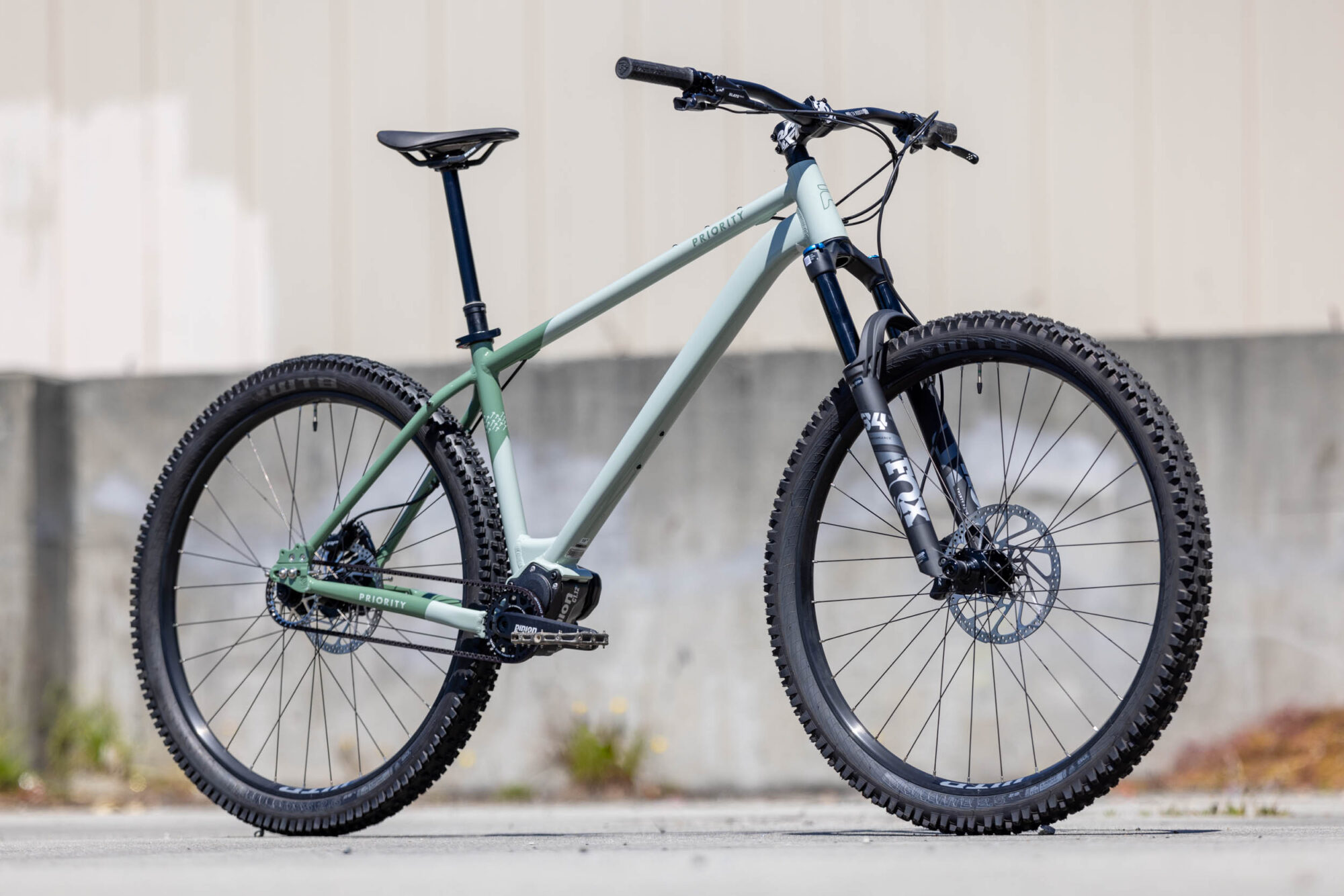
The 600% gear range of the 12-speed Pinion C1.12i gearbox left little to be desired from a gearing standpoint. However, when loaded with bags and camping gear, the weight of the bike started to feel a bit much. It’s worth noting that the Pinion unit accounts for nearly five pounds of the total weight, which is significant. After multiple consecutive days of bikepacking, I felt myself fatiguing quicker than usual, and I’m confident the Pinion’s break-in period and bike weight were to blame. Having logged close to 2,000 kilometers on the bike now, I’m well past Pinion’s 1,000-kilometer break-in period, and while it runs smoother than day one, it still doesn’t feel quite as efficient as a standard derailleur-equipped drivetrain, especially at low speeds.
Build Kit
- Frame: 6061 Alloy Frame with Internal Dropper Routing
- Fork: Fox 34 Performance, 140mm Travel, 44mm Offset, Boost, Grip 2 Damper
- Gearbox: Pinion Electronic Shifting Smart.Shift C1.12i, 12-speed, 600% Range
- Front Sprocket: 32t CDX:BLACK
- Rear Sprocket: 30t CDX:BLACK
- Belt: 111t Gates Carbon Drive CDX
- Seatpost: OneUp 180mm
- Handlebar: 174 Hudson MTB, 7050 Aluminum, 780mm Width, 7-Degree Backsweep, 20mm Rise
- Stem: Race Face Chester, 31.8mm Clamp, 50mm Length
- Rims: WTB KOM Trail i30
- Front Tire: WTB Vigilante 29 x 2.5″ Tubeless-Ready
- Rear Tire: WTB Trail Boss 29 x 2.6″ Tubeless Ready
- Front Hub: Sealed Bearing, 6-Bolt, Boost Thru-Axle
- Rear Hub: Custom Spec, High-Engagement, Single-Speed Cassette, Boost, 6-Bolt
- Brakes: TRP Slate T4 2.3mm 203F/180R Rotor, Hydraulic 4-Piston Disc Brakes
- Saddle: WTB Volt Medium
Who’s it For?
First and foremost, the Priority 600HXT is a trail bike. While it might not be as progressive (after adjusting its geometry for sag) as other hardtails we’ve tested here on the site, it falls into a versatile category of bikes equally suited for long, consecutive days of bikepacking as well as day rides. Looking exclusively at the 600HXT’s geometry and build kit, it has all the fixings for a fantastic do-everything hardtail. Throw a Pinion Smart.Shift gearbox into the mix, and you’ve got a super reliable, practically maintenance-free mountain bike that would have no trouble getting you into some seriously wild places and back out again.

Compared to other Pinion-equipped hardtails, the 600HXT is somewhat unique. For whatever reason, there seems to be a lack of Pinion trail bikes that fall between ATB-style bikes and super aggressive enduro-oriented hardtails. Most of them also tend to be made of titanium, which increases the price significantly compared to Priority’s lineup of aluminum Pinion bikes. Of course, titanium shaves a substantial amount of weight, with some complete Pinion builds lingering under the 30-pound mark, which is considerable compared to the extra-large 600HXT I tested, at 37 pounds.
If you’re already sold on the Pinion transmission and won’t go without the benefits of electronic shifting, and the 600HXT’s geometry fits the bill for your ideal day on the bike, then the price tag might be the deciding factor. Sure, it’s a heavy bike, but it’s also one of the most affordable complete Pinion bikes on the market at $4,000. If the 600HXT seems like too much bike, then the Priority 600ADX at $3,500 is another competitively priced option worth checking out.
- Model/Size Tested: Priority 600HXT, XL
- Weight (as tested): 37 pounds (16.7 kg)
- Place of Manufacture: China
- Price: $4,000 USD
- Manufacturer’s Details: PriorityBicycles.com
Pros
- Modern trail geometry that’s suited for trail riding and loaded bikepacking
- First production hardtail in the US equipped with Pinion Smart.Shift, a huge upgrade over the standard grip shift version
- Low and stable, plenty of traction and control on steep climbs, and capable on technical descents
- Rear rack mounts, top tube mounts, and downtube bosses for additional cargo
- Thoughtfully curated build kit
- Among the most affordable complete Pinion bikes available
- Smart.Shift battery life is impressive
- Shifting and gearbox feel improves with time
Cons
- Very heavy at over 37 pounds for the extra-large complete
- Smart.Shift has its limitations, particularly for bigger riders on singletrack and steep climbs
- Belt drive Pinion transmissions have resistance at low speeds
- Stiff rear end and chunky construction isn’t forgiving for long, seated rides
- Awkward downtube mount position
Wrap Up
The strange world of Pinion bikes can feel alien and confusing until you’ve experienced one for yourself. Thankfully, more and more brands and custom builders are working with the Pinion system, and while it’s hard to imagine gearboxes replacing derailleurs any time soon, they’re starting to feel slightly more mainstream.
The Priority 600HXT was a great introduction to Pinion Smart.Shift, as it offers a relatively familiar fit and feel, a solid build kit, and the benefits of electronic shifting in one well-rounded package. Despite being the heaviest hardtail I’ve ridden to date, it still has a playful and confident ride quality that charges through singletrack thanks to a stiff chassis and derailleur-free rear end. I almost hate to say it, but I’d love to see Priority offer a titanium version of the 600HXT, as they did with their Gemini gravel bike.
Further Reading
Make sure to dig into these related articles for more info...
Please keep the conversation civil, constructive, and inclusive, or your comment will be removed.







